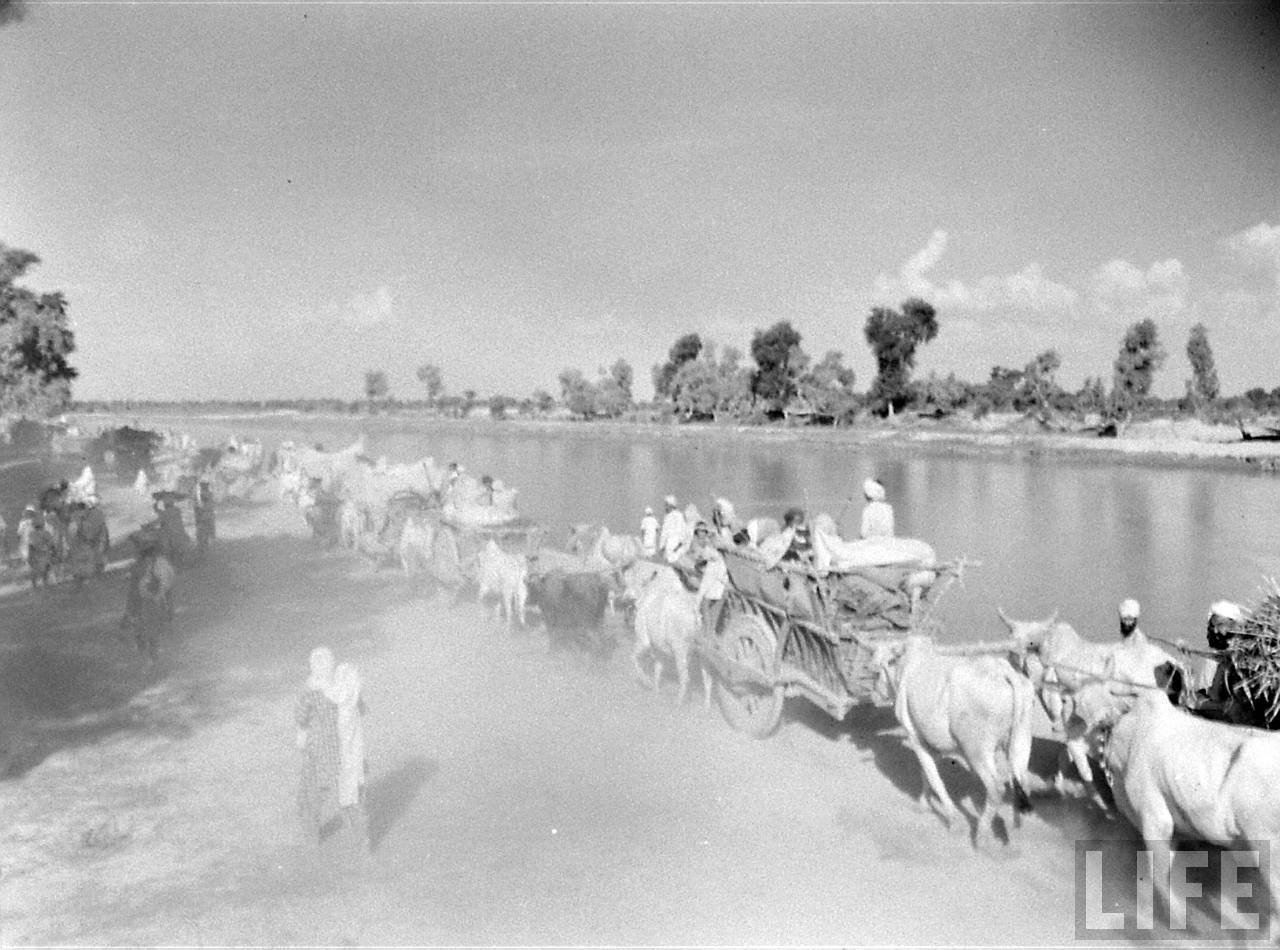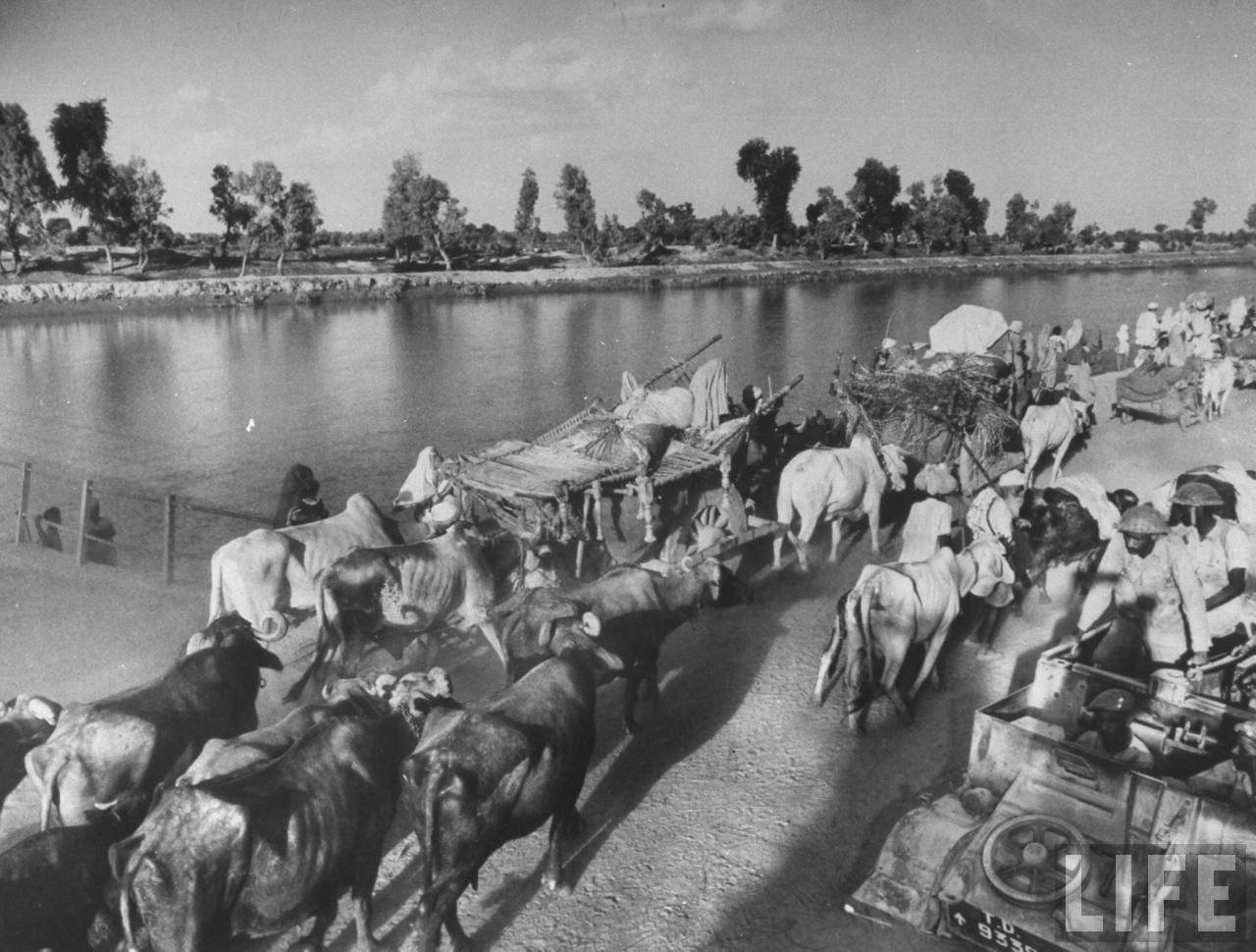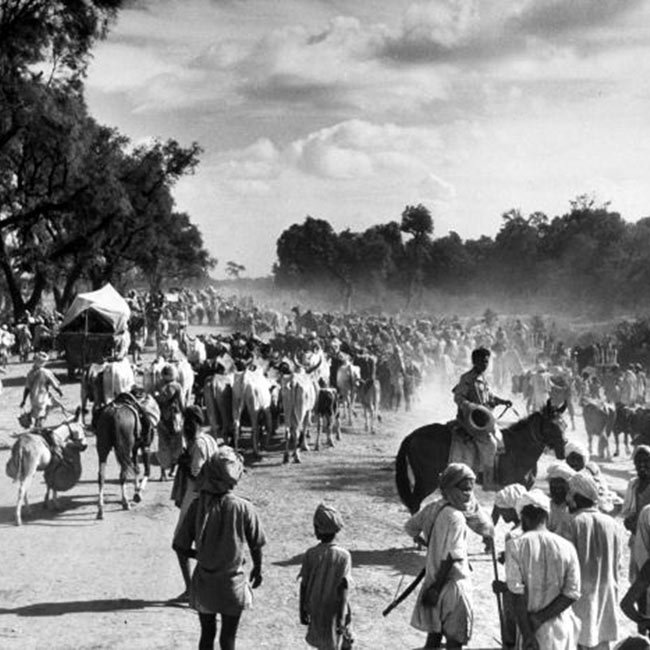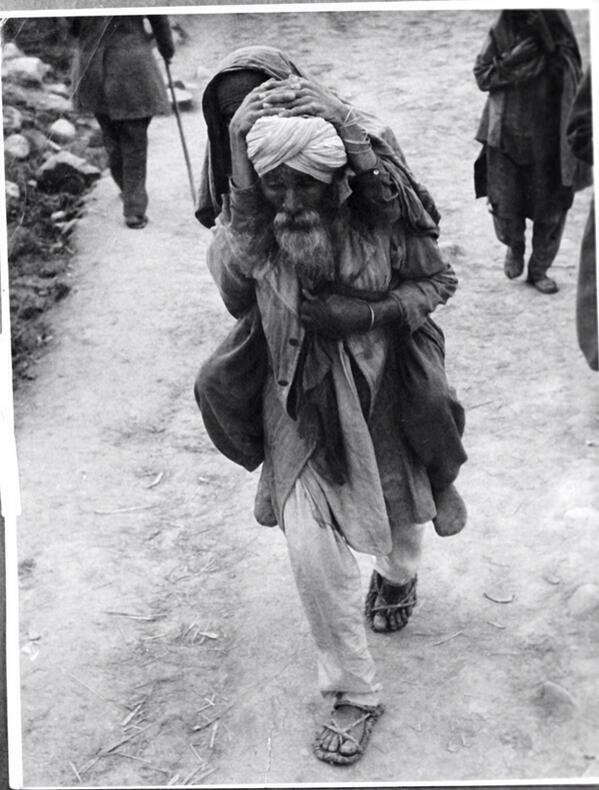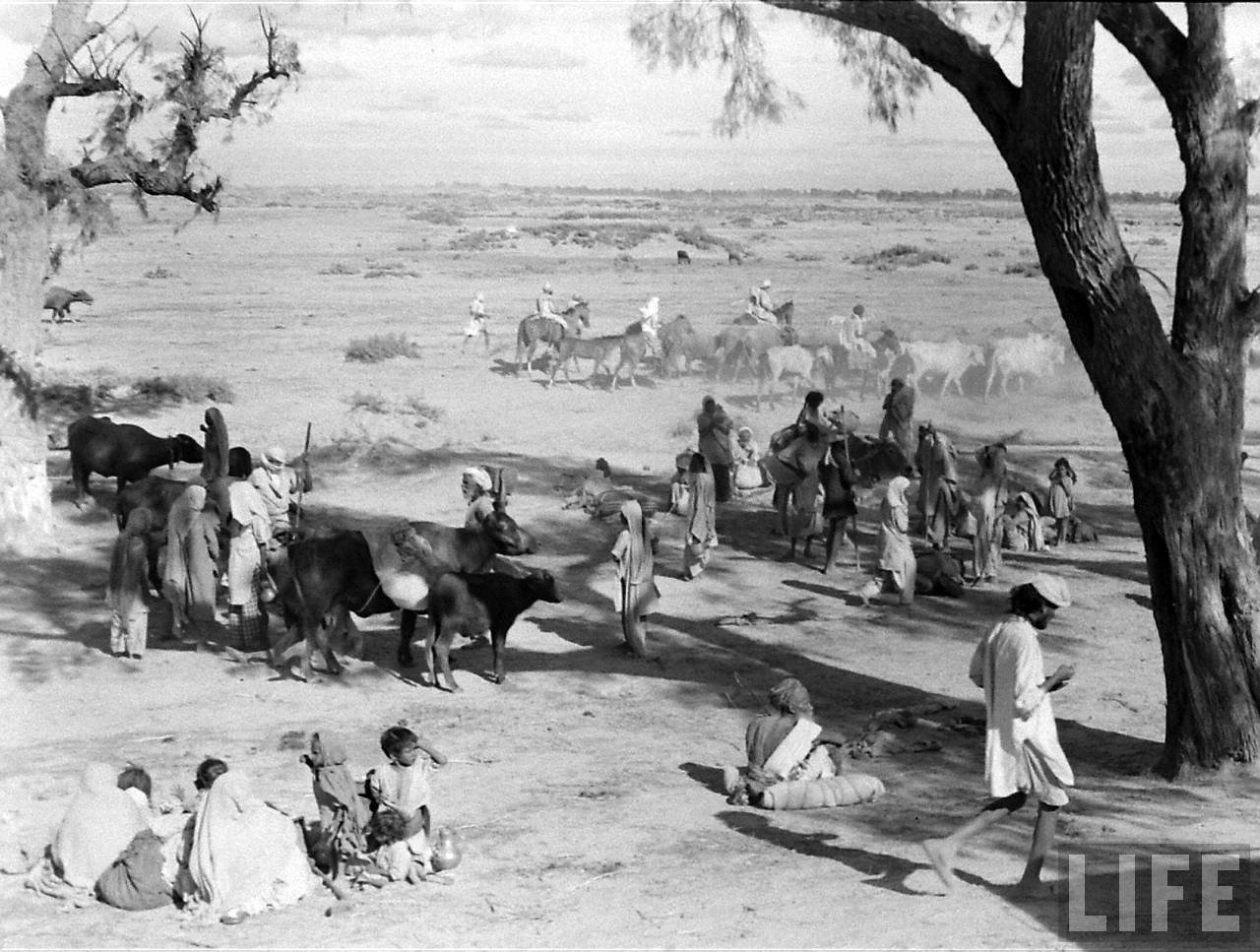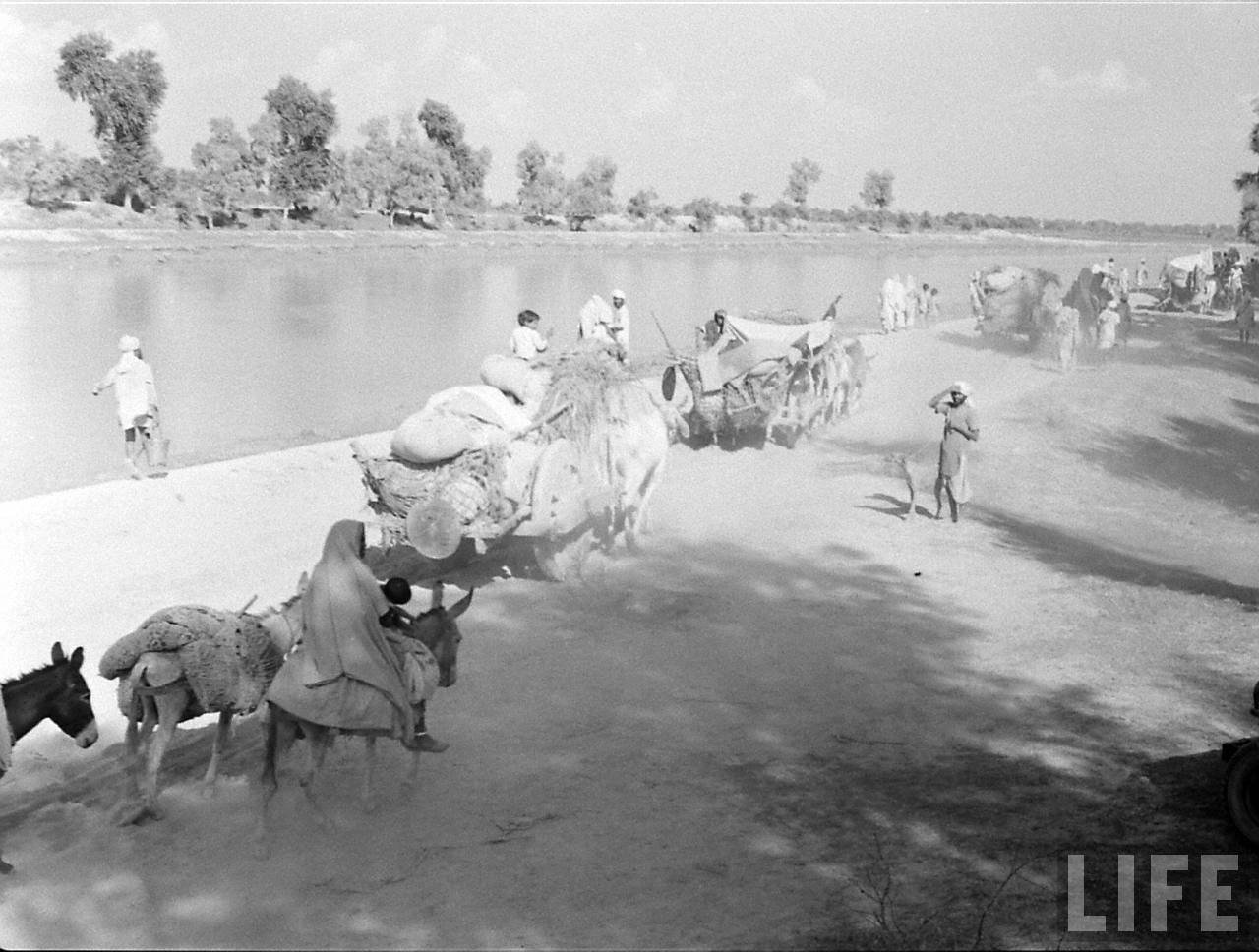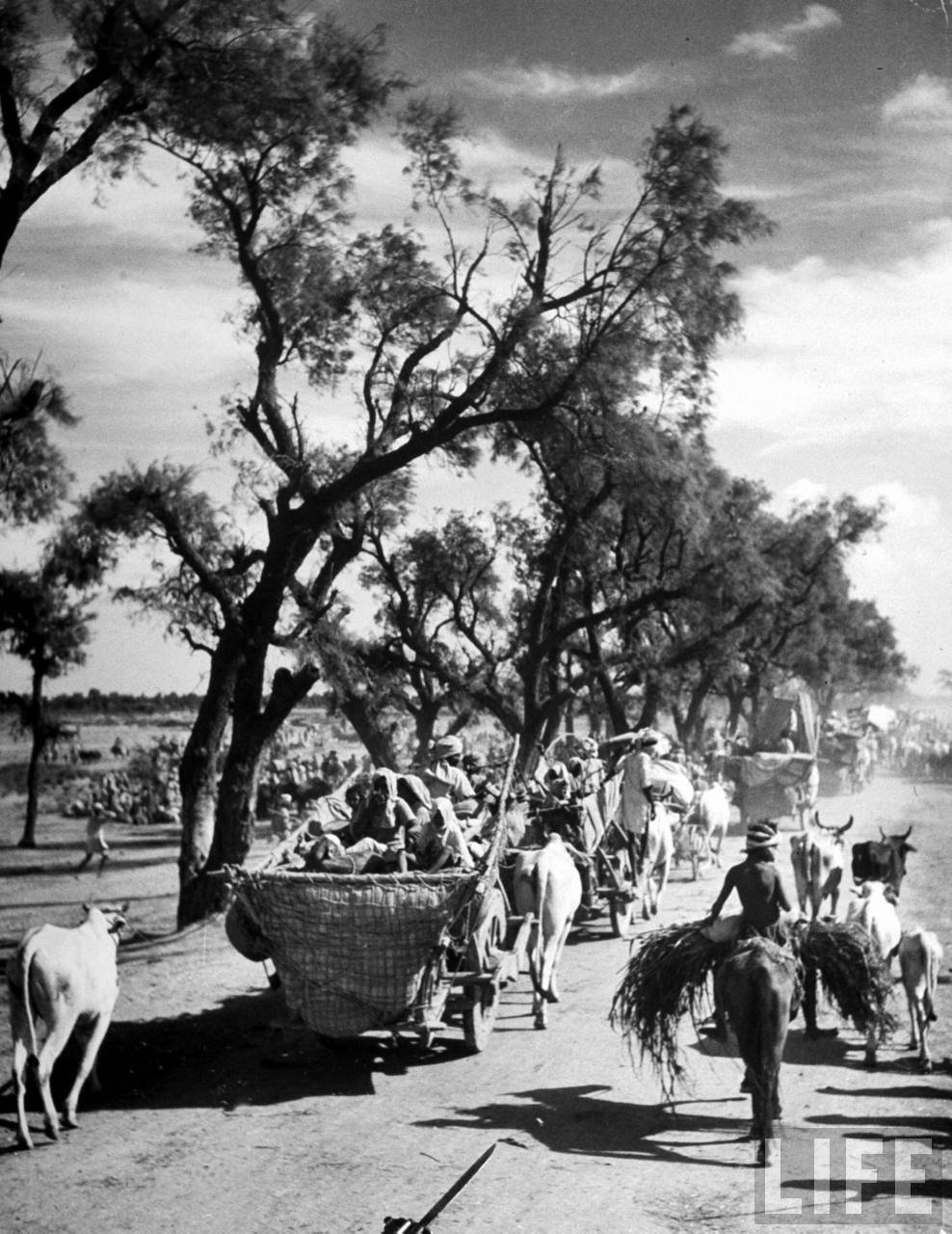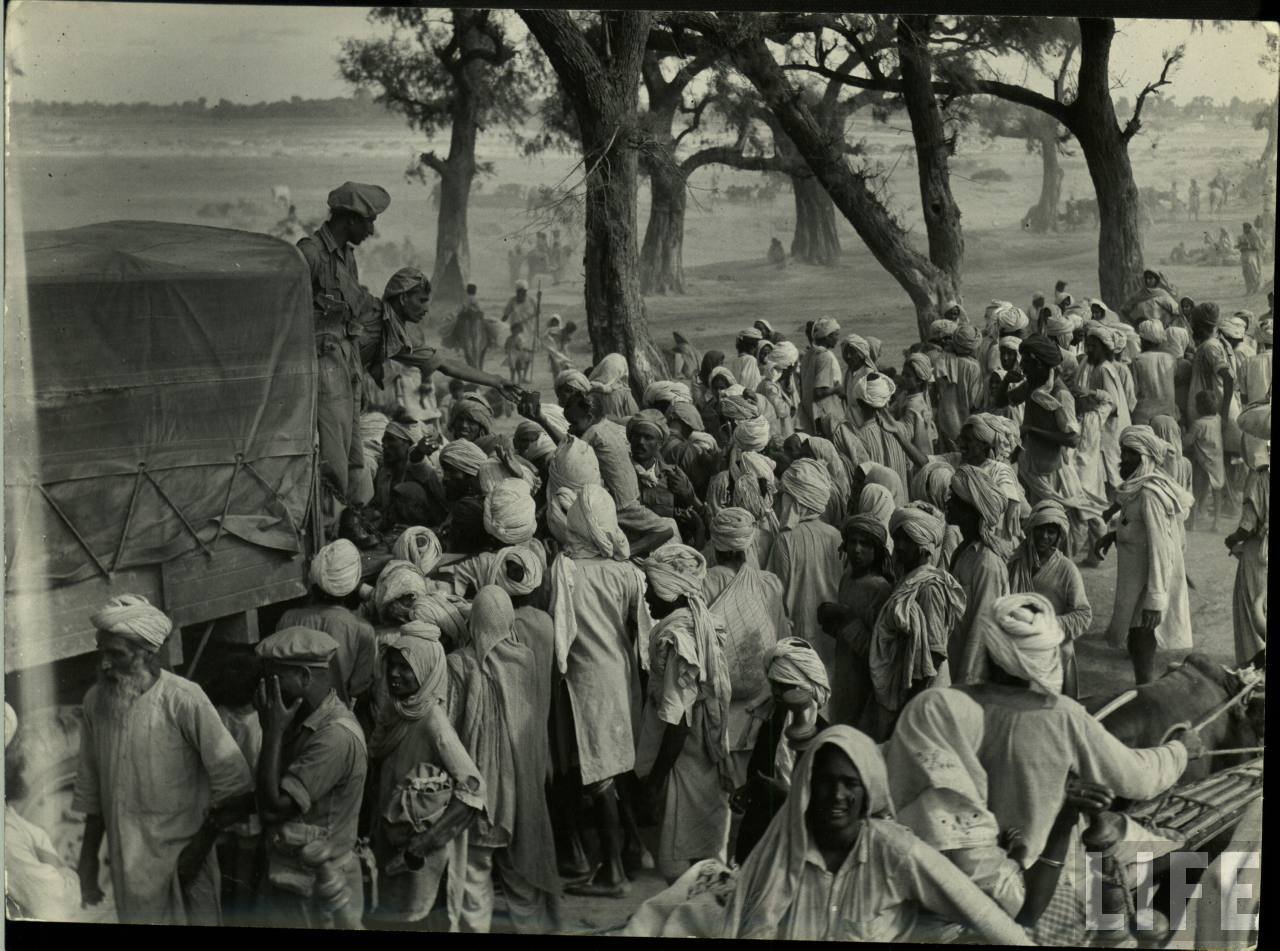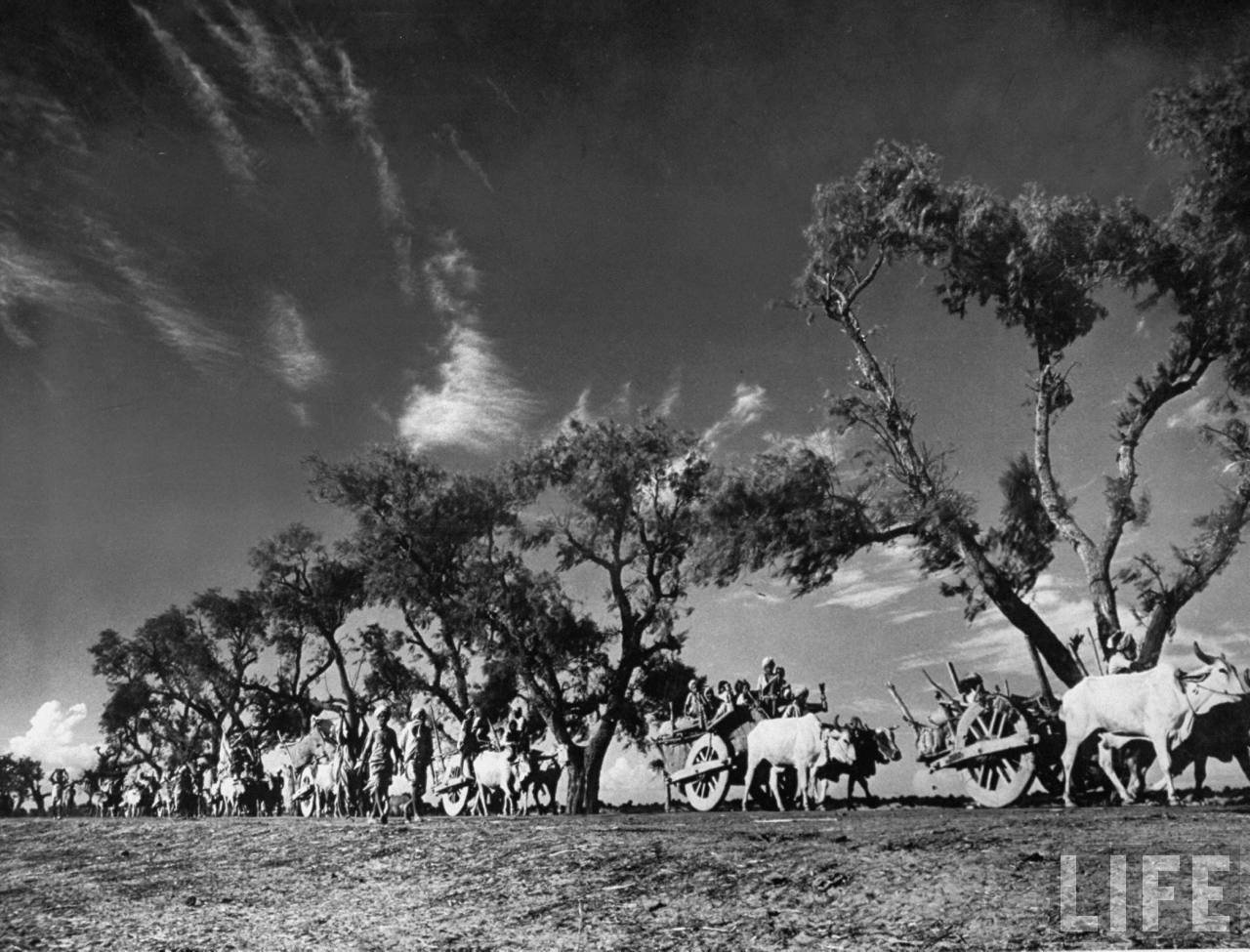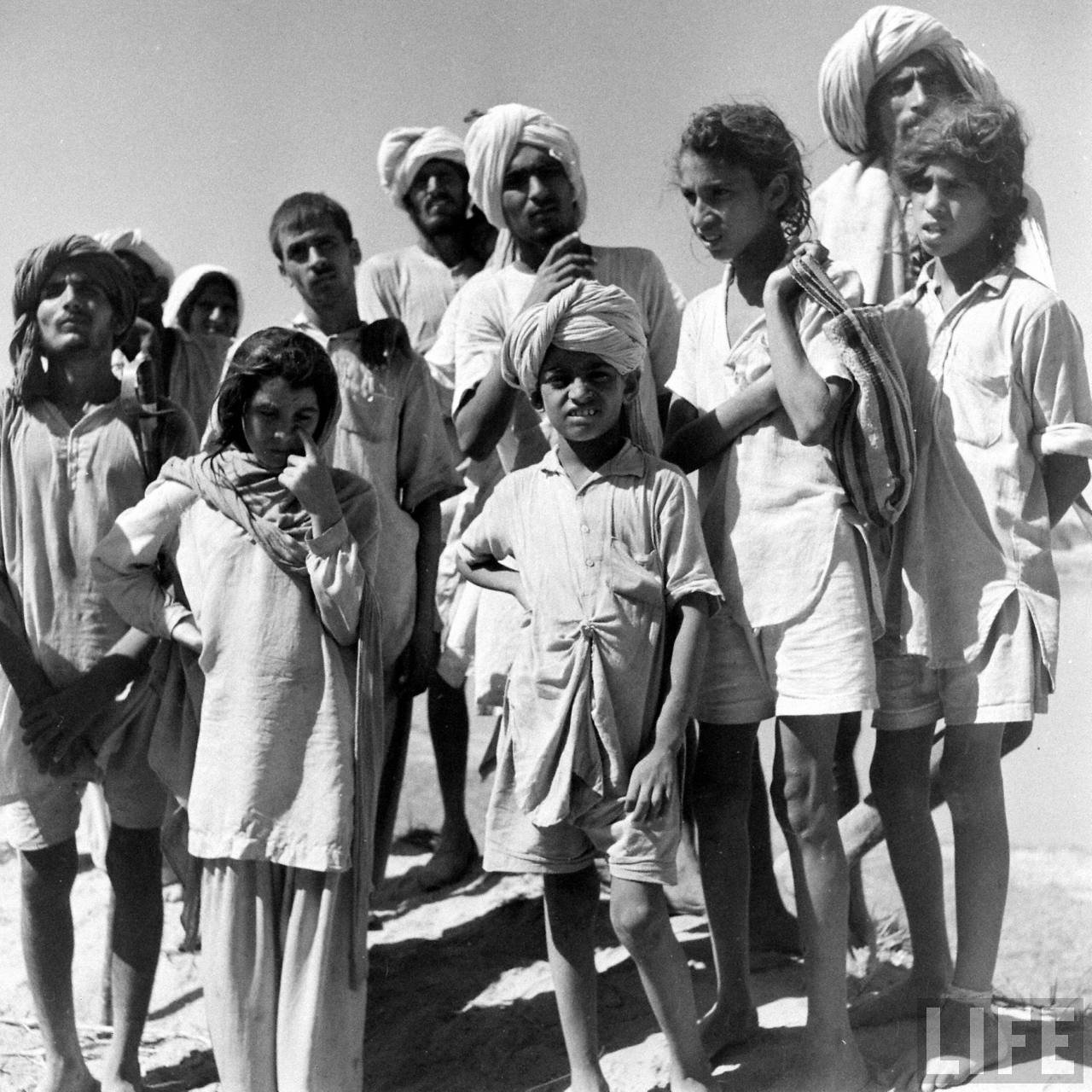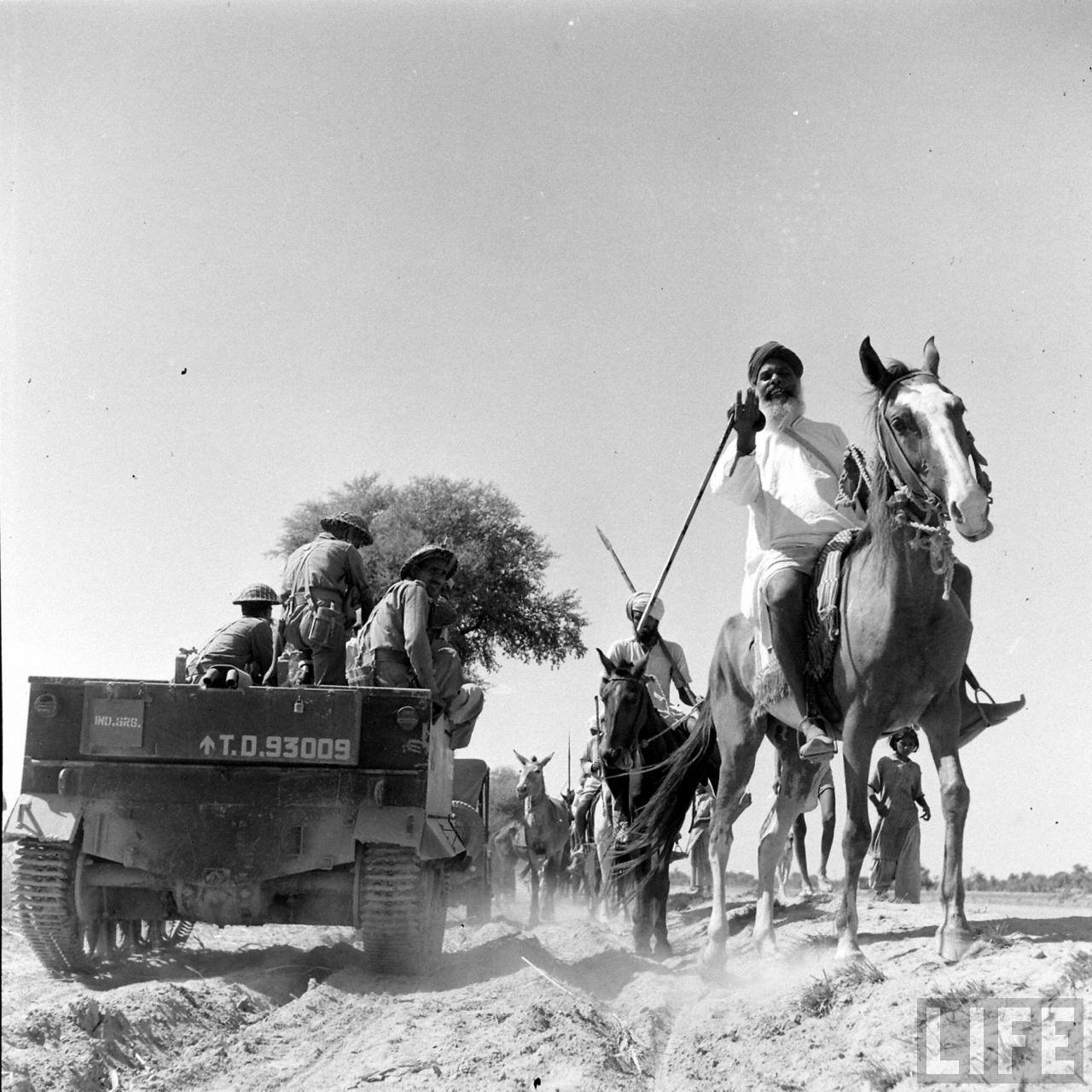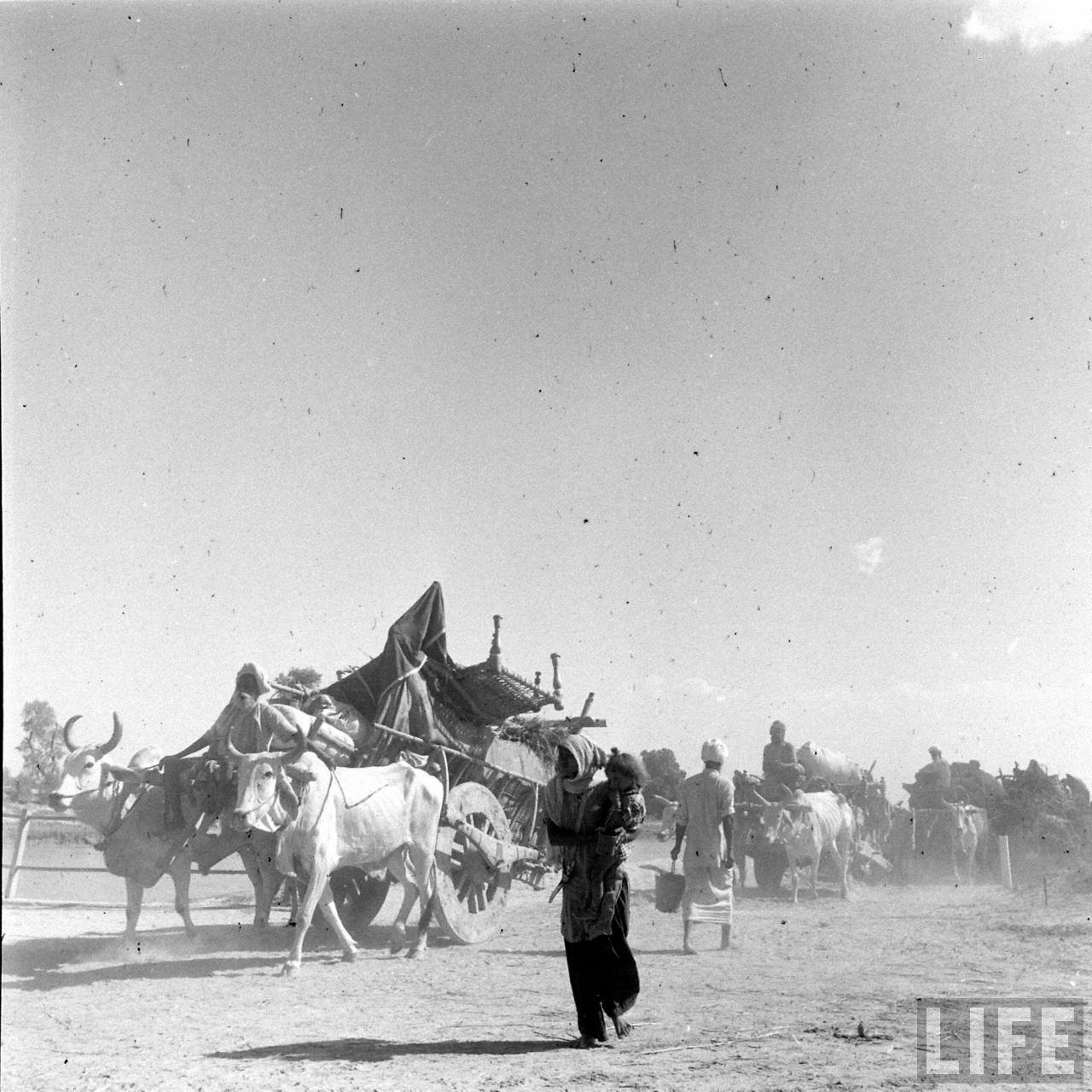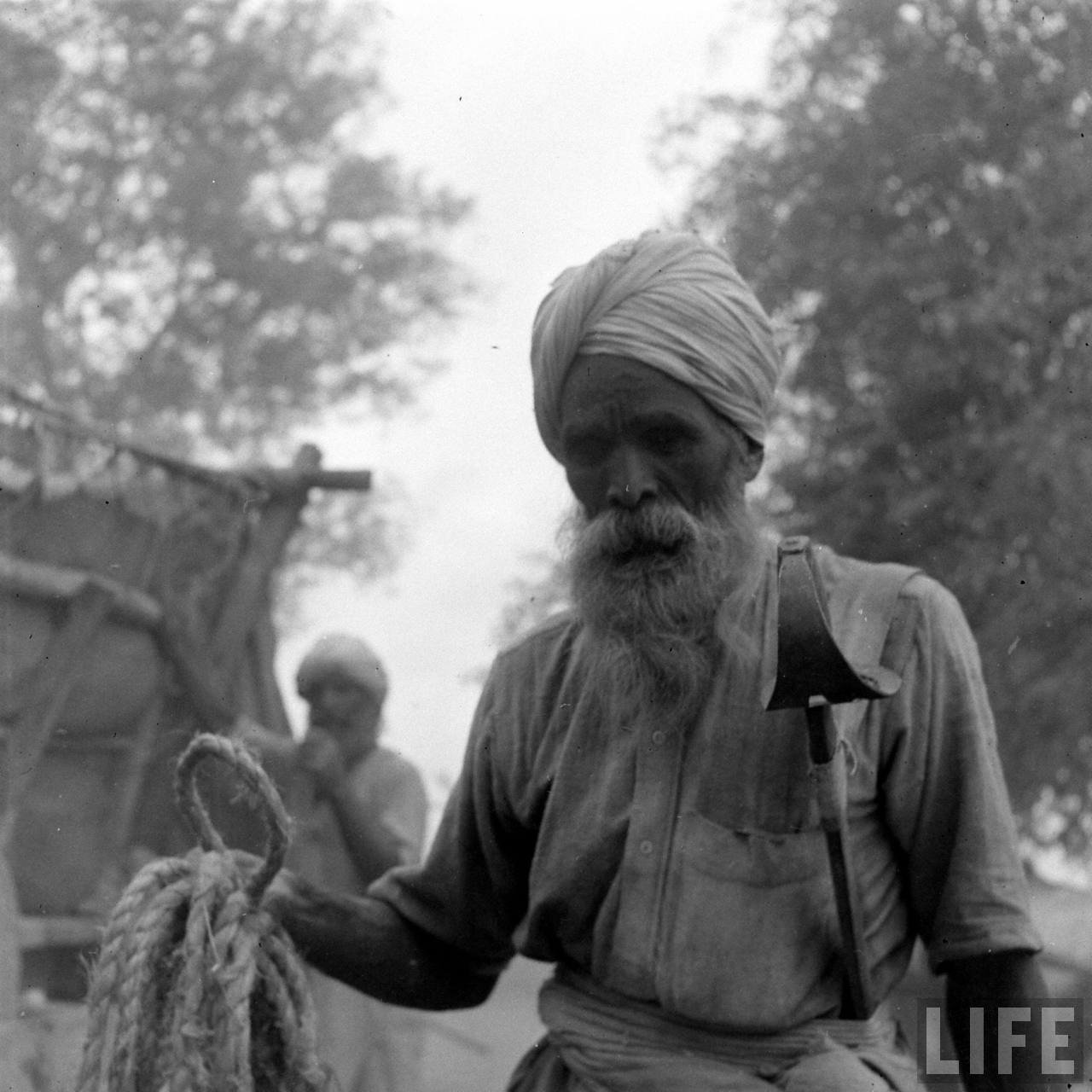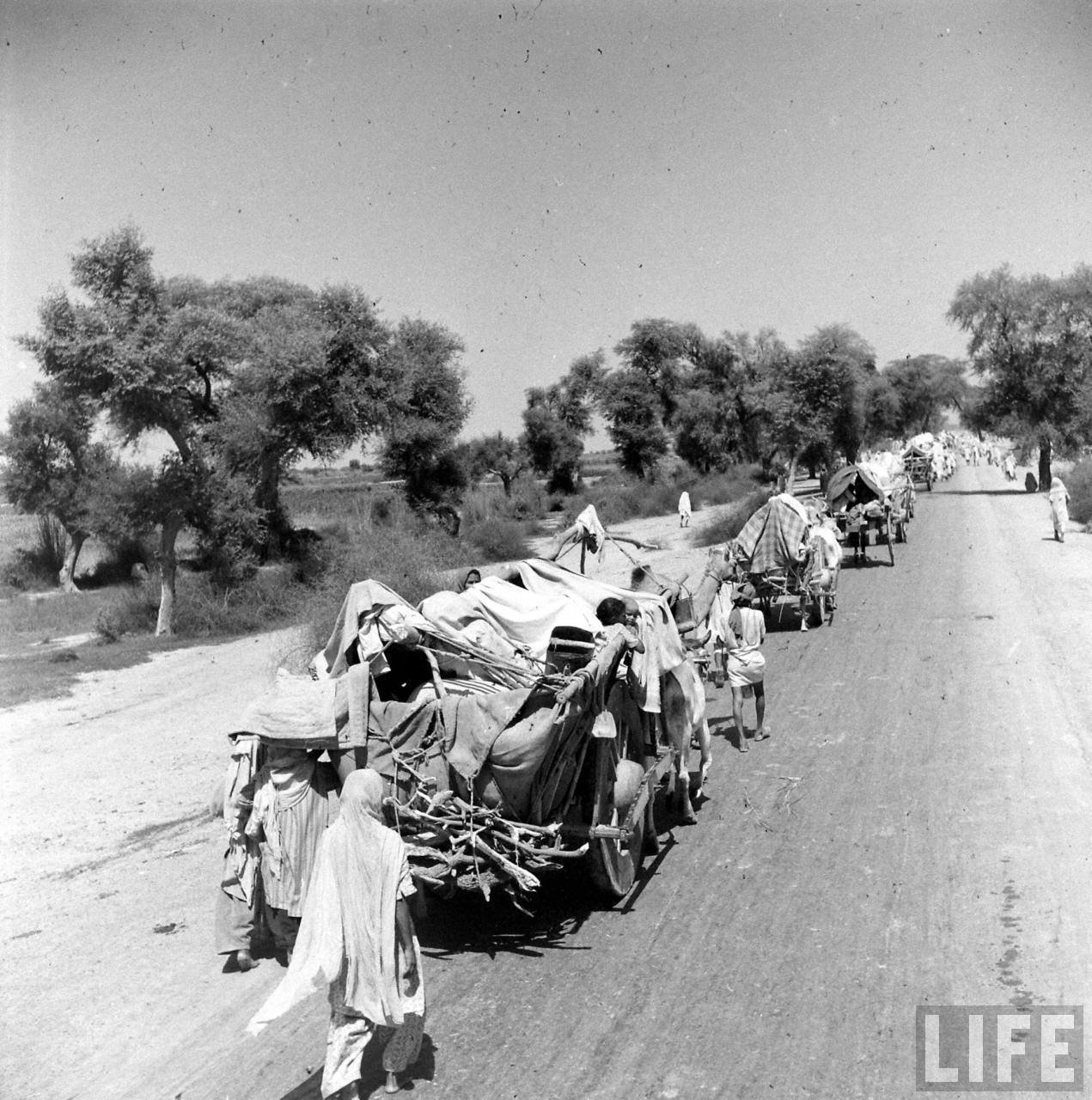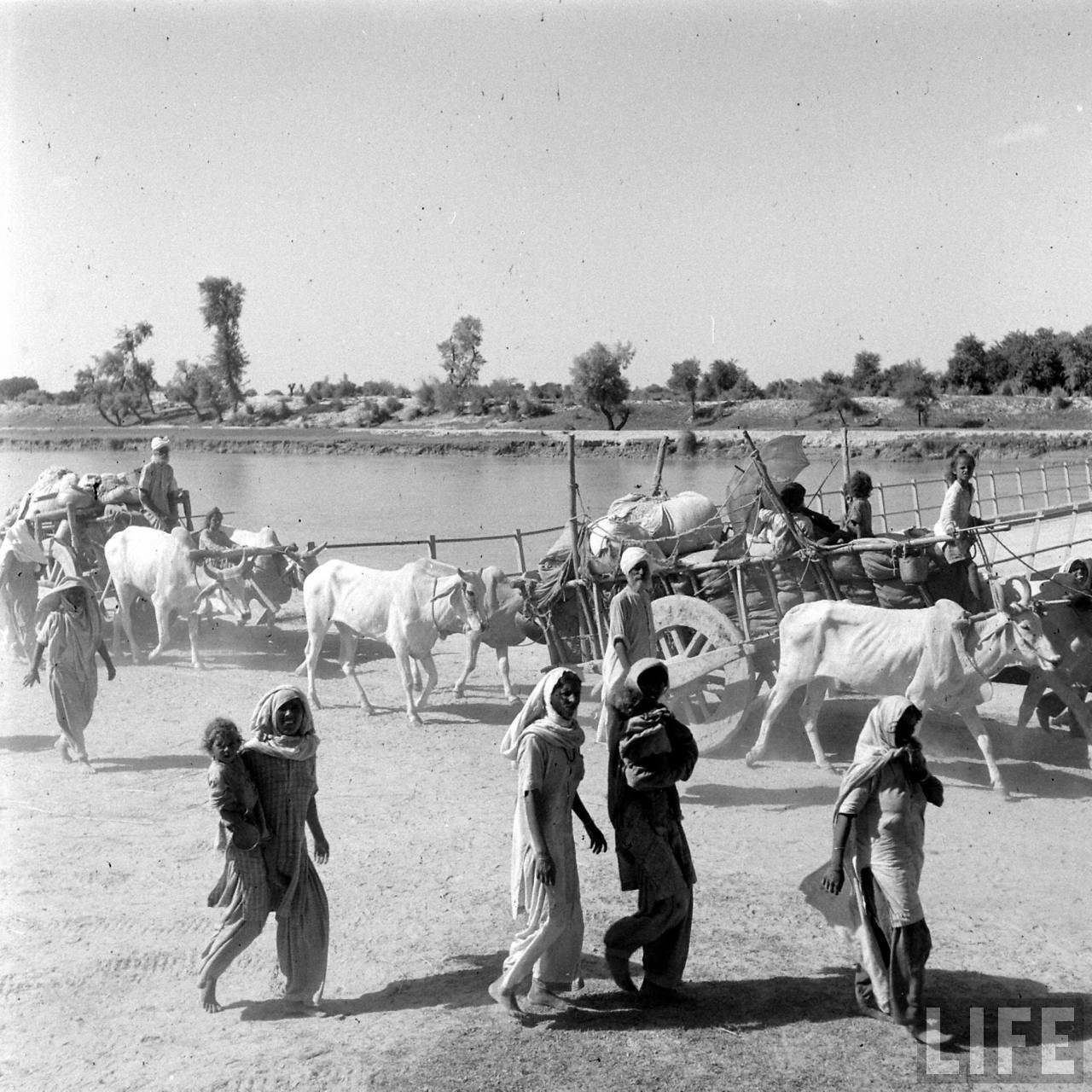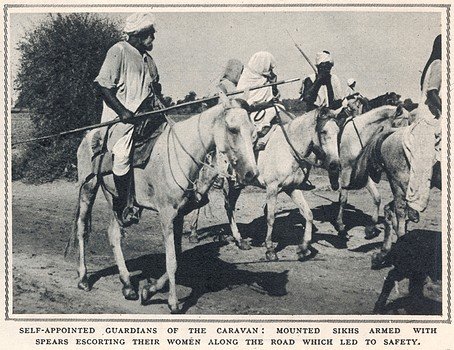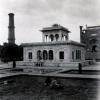Search the Community
Showing results for tags '1947'.
-
There are many videos, people, articles and comments online claiming Sikhs were the main and first aggressors during the partition (1947). In reality, it was Sikhs who were first targeted by aggressive Muslim mobs in modern day Pakistan before the partition was even announced! Don't fall for any propaganda, especially Pakistani, which shifts most blame to Sikhs (as seen online and in movies/dramas). The looting, killing and abductions were all first unleashed by Muslim groups. 1946 genocide of Sikhs & Hindus in Hazara region Violence broke out in Calcutta, 1946 as the Muslim league ordered "Direct Action" resulting in thousands of deaths. Similarly, in late 1946, Sikhs and Hindus of Hazara district (NWFP) first faced unprecedented savagery from Muslim mobs. Although its not in Panjab, Hazara had a large Panjabi population. On 7/12/1946, many Sikhs in villages faced unprovoked attacks. In Batal village, 22 Sikhs and Hindus were killed or wounded. The markets of Uggi village were attacked and shops of Sikhs were set on fire, 5 more were killed. In Sum Ilahi Mung village, Sikhs and Hindu evacuees from Batal & Uggi were attacked, 14 were killed with 27 injured. In Garhi Jallo, stray killing of Hindus and Sikhs continued, the Gurdwara was also burnt down. This violence extended to other parts of the district. Many more Sikhs were burnt and shot. Due to deteriorating conditions, evacuees sought refuge in places such as Rawalpindi and eastwards in Panjab. Rise of Muslim-league agitation in Panjab The agitation had begun earlier in Panjab, however it grew more violent in February, 1947. There were many train hold ups in places like Amritsar and Ludhiana. On 14/2/1947, faces of non-Muslim tonga (horse carriage) drivers were blackened. The Muslim-league in Amritsar attacked a Sikh constable who was stoned to death by a mob (25/2/1947). Toha Khalsa massacre of Sikhs in Rawalpindi in March, 1947 Thoha Khalsa is a village of Kahuta Region of District Rawalpindi. Sikhs were attacked by people from surrounding villages in Rawalpindi on 6th March, 1947. They were asked to convert or face violence and the local Muslims remained silent despite assuring them safety before. Sikhs negotiated with the mobs for days and finally gathered at the grand Haveli of Sardar Gulab Singh. After Sikh houses were looted, mobs attempted to gain access to the Haveli. On March 12, 200 Sikhs were killed and the women were asked to accept Islam. However, most Sikh women (led by Maan Kaur) committed suicide at the village well. A while later, military arrived in the village to rescue any survivors. Link to eyewitness account of a 85 year old Muslim Account of Basant Kaur (survivor) "I took my children, and then we jumped in -- I had some jewelry on me, things in my ears, on my wrists, and I had fourteen rupees on me. I took all that and threw it into the well, and then I jumped in, but it's like when you put rotis into a tandoor, and if it is too full, the ones near the top, they don't cook, they have to be taken out. So the well filled up, and we could not drown... the children survived. Later Nehru went to see the well..."
-
6
-
- 1947
- sikh massacre
-
(and 1 more)
Tagged with:
-
Last Updated: Friday, 5 December, 2003, 13:31 GMT E-mail this to a friend Printable version Reunion heals partition wounds By Zulfiqar Ali BBC correspondent in Muzaffarabad Harbans Kore hugs daughter Zeenat Bibi at the reunion A 77-year-old Indian woman who has had two homelands, two husbands and two religions has finally brought her family together after decades of separation. "My wish was to see my children again once in my lifetime and my wish has come true," said Harbans Kore at the family reunion in Pakistan. Ms Kore, a Sikh, had travelled from the Indian city of Ahmedabad to meet the Muslim son and daughter she had not seen for more than 40 years. Ms Kore's story began at the time of the partition of India and the creation of Pakistan in 1947. She and her husband were Kashmiri Sikhs living in the village of Pataika, 16 kilometres (11 miles) north-east of Muzaffarabad in what is now Pakistan-controlled Kashmir. Tensions between Muslims and those Hindus and Sikhs still living in the area were such that after a few years Ms Kore's husband fled to India. I wish she could stay with us but she cannot because she has to go back. She has a family there also Zeenat Bibi, daughter She was left behind. Assuming the husband had gone forever, Ms Kore converted to Islam, marrying a Muslim man named Hadayatullah. Together they had a son, Manzoor Hussein Awan, and a daughter, Zeenat Bibi. But in the mid-1950s, Ms Kore was forced to leave for India under an agreement between Islamabad and Delhi to reunite women with their original families. That was when her separation from daughter Zeenat and son Manzoor began. In India, Ms Kore re-converted to Sikhism and had another two daughters and a son with her first husband. Telephone contact For many years, the members of the divided family did not know of each other's whereabouts or even if they were alive. Then seven years ago Zeenat, now 53, and her brother, 48, found out through a relative that their mother was still alive. Brothers in arms Dalveer Singh and Manzoor Hussein Awan "It was just two years ago that we were able to locate her telephone number and then we spoke by telephone, wrote letters and exchanged pictures," said Zeenat. The family wanted to meet immediately but heightened tension between the now nuclear rivals India and Pakistan prevented it. It was not until the recent thaw and the resumption of a bus service between the Pakistani city of Lahore and India's capital, Delhi, in July that their dreams were realised. Ms Kore finally crossed back into Pakistan last week, accompanied by her Sikh son, Dalveer Singh, and her daughter-in-law. They were greeted by Zeenat and Manzoor, along with grandchildren and other family members, at the Wagah border crossing. One of Ms Kore's Sikh daughters joined the reunion this week, along with the daughter's husband and own daughter. Ancestral village Ms Kore said: "It is lovely to see my children after all these years. I am lucky to see my son and daughter and my grandchildren again after such a long time and I feel so happy." Until seven years ago the divided family had had no contact Ms Kore and other family members are staying with her family in Muzaffarabad until the middle of December. But one person Ms Kore could not be reunited with was her Muslim husband - he died two years after she left for India. Ms Kore wants to show her ancestral village to her Indian children but is not sure if the authorities in Muzaffarabad will allow her to go there. Zeenat said: "We know how we suffered all these years and how badly we missed our mother. I wish she could stay with us but she cannot because she has to go back. She has a family there also." Her only other regret was that her mother could not attend the wedding of her son last October. She invited the family but they could not get the visas or bus tickets in time. Manzoor said of the reunion: "We have been deprived of our mother's love and affection for more than four decades and now we are so happy to meet our mother and family. "It is the first time in my life I have found this happiness. Everybody is happy - my wife, my children, my sister and every member of our family that we are together again." Have any people here got relatives in pakistan?
-
I'm trying to understand her motivations of what lead her to the path of such death and destruction not just for so many Sikhs but herself. Early on in her life and political career she seemed to have enjoyed a good relationship with the Sikh community but things seemed to have changed around mid 70s to late 80s. Possible reasons could be below: Former BJP MP sumbarimayan alleges the USSR KGB (who was allied with India during the cold war) advised her to targeting and painting Sikhs as terrorists and get the hindu votebank to win elections She had an estranged Sikh daughter in law manika gandhi (who was from a Sikh family married to indira's son sanjay gandhi). Rajiv gandhi and arun gandhi hated manika so maybe developed an eminity for Sikhs cos of her and wanted to teach her and her community a lesson. Akali Dal used Sikhs in punjab to fill mass jails with peaceful agitations opposing indira gandhi's emergency powers. It is alleged she took this very personally and wanted to teach the akali dal a lesson. Being a daughter of Late Prime minister Nehru perhaps she secretly held the same grudges and beliefs her father held about Sikhs that they were a "criminal tribe" when they violently resisted the partition of their homeland Punjab in 1947 and then after the horrors of partition genocide wanted what was promised to them in 1950s.
- 36 replies
-
- indira gandhi
- sikhs
-
(and 5 more)
Tagged with:
-
-
Sad to hear that even afterspending their own money on flats and businesses after 1947 , Mumbai refugees from Punjab are still not secure and are being made homeless again by court order: https://scroll.in/article/887276/facing-eviction-residents-of-mumbais-partition-era-colony-fear-they-will-become-refugees-again
- 15 replies
-
3
-
I was reading an article a few years ago regarding what British Intelligence reports were saying that Sikhistan/Khalistan is going to be established very soon during 1940s. So my question is does anyone have any background information what went wrong to prevent it apart from the British white imperialists not wanting it created?
-
For more than 50 years, the Central Govt has made Panjab give away more than 50 percent of its river water, for free, to the non riparian states of Rajasthan, Haryana and Delhi. And it has costed Panjab more than 20 lakh crore rupees (£200 billion pounds). Today only 20 per cent of Panjab's water needs are being met by its own river water. In this film, Pritam Singh Kumedan, an expert and advisor to the Panjab Govt on riparian water issues, reveals, in an interview with UNITED SIKHS, how Panjab can stop giving away this water for free. Will the politicians, who Panjab is voting for on 4th Feb 2017, ensure that Panjab does not give away its water to non-riparian states anymore?
-
?
-
source: Facebook After the partition of India , there were mass killings of Sikhs on both sides of border and thousands of sikh women had to give up their lives to protect their honour. At this time, KHALSA PANTH, formed ''SHAHEEDI DALS'' all over Punjab to organize defence of Sikhs, protect Gurudwaras, Sikh women and children and uphold Dharam. Bhai Sahib Bhai Randhir Singh Ji was made Jathedar of Shaheedi Dal in Ludhiana District. Bhai Sahib wrote this article with references from ''Dasam Baani'' to arouse BIR RAS and DHARAM YUDH KA CHAO in Shaheedi Dals defending Sikhs from Muslims and it was printed in Sikh newspapers and tracts and had an electrifying effect . Please take out few minutes to read and understand this legendary Khalsa Spirit arousing Article. Words which Bhai Sahib wrote back then are true today also and can help us move forward on path of Sangharsh.**** ਖ਼ਾਲਸਾ ਜੀ ਦਾ ਗੁਰਮਤਿ ਆਦਰਸ਼ (ਭਾਈ ਸਾਹਿਬ ਰਣਧੀਰ ਸਿੰਘ ਜੀ) ਨੋਟ-ਦੇਸ਼ ਦੀ ਵੰਡ ਹੋਣ, ਪਿਛੋਂ ਜਰਵਾਣਿਆਂ ਨੇ ਬੜੇ ਜ਼ੁਲਮ ਢਾਹੇ। ਉਨ੍ਹਾਂ ਨੂੰ ਸੋਧਣ ਪ੍ਰਬੋਧਣ ਲਈ ਖ਼ਾਲਸਾ ਪੰਥ ਨੇ "ਸ਼ਹੀਦੀ ਦਲ" ਕਾਇਮ ਕੀਤਾ। ਲੁਧਿਆਣੇ ਜ਼ਿਲੇ ਦੇ ਪ੍ਰਧਾਨ ਭਾਈ ਰਣਧੀਰ ਸਿੰਘ ਜੀ ਥਾਪੇ ਗਏ। ਓਦੋਂ ਭਾਈ ਸਾਹਿਬ ਨੇ ਖ਼ਾਲਸਾ ਜੀ ਨੂੰ ਇਕ ਸੰਦੇਸ਼ ਦਿਤਾ। ਓਸ ਛਪੇ ਟ੍ਰੈਕਟ ਵਿਚੋਂ ਕੁਝ ਹਿੱਸਾ ਹੇਠਾਂ ਦਿੱਤਾ ਜਾ ਰਿਹਾ ਹੈ ੴ ਵਾਹਿਗੁਰੂ ਜੀ ਕੀ ਫਤਹ॥ ਦੁਸਟ ਜਿਤੇ ਉਠਵਤ ਉਤਪਾਤਾ॥ ਸਕਲ ਮਲੇਛ ਕਰੋ ਰਣ ਘਾਤਾ॥ ਦੁਸ਼ਟ ਦਮਨੇਸ਼ ਸ੍ਰੀ ਗੁਰੂ ਦਸਮੇਸ਼ ਜੀ ਦਾ ਧਰਮ ਧੁਰੰਦਰੀ ਉਦੇਸ਼ ਸਚ ਉਪਕਾਰ ਆਦਰਸ਼ੀ ਉਪਦੇਸ਼ ਇਹ ਹੈ ਜੋ ਉਪਰ ਅੰਕਤ ਦੁਪੰਗਤੀ ਵਿਚ ਖ਼ਾਲਸਾ ਪੰਥ ਪ੍ਰਤੀ ਪ੍ਰਤਿਪਾਦਨ ਹੋਇਆ ਹੈ, ਉਸ ਸ੍ਰੀ ਕਲਗੇਸ਼ ਪਿਤਾ ਜੀ ਵਲੋਂ, ਜਿਨ੍ਹਾਂ ਦਾ ਮੁਖ ਪਰਯੋਜਨ ਜਗ ਜਨਮ-ਯਾਤ੍ਰਾ ਦਾ ਕੇਵਲ ਇਹ ਸੀ- ਹਮ ਇਹ ਕਾਜ ਜਗਤ ਮੋ ਆਏ॥ ਧਰਮ ਹੇਤ ਗੁਰਦੇਵ ਪਠਾਏ॥ ਜਹਾਂ ਤਹਾਂ ਤੁਮ ਧਰਮ ਬਿਥਾਰੋ॥ ਦੁਸ਼ਟ ਦੋਖੀਅਨ ਪਕਰਿ ਪਛਾਰੋ॥42॥ ਯਾਹੀ ਕਾਜ ਧਰਾ ਹਮ ਜਨਮੰ॥ ਸਮਝ ਲੇਹੁ ਸਾਧੂ ਸਭ ਮਨਮੰ॥ ਧਰਮ ਚਲਾਵਨ ਸੰਤ ਉਬਾਰਨ॥ ਦੁਸ਼ਟ ਸਭਨ ਕੋ ਮੂਲ ਉਪਾਰਨ॥43॥ {ਬਚਿਤ੍ਰ ਨਾਟਕ, ਅਧਿ:6} ਇਸ ਉਪਰਲੇ ਆਦਰਸ਼ ਨੂੰ ਹੀ ਅਮਲੀ ਜਾਮਾ ਪਹਿਨਾਉਣ ਲਈ ਅਜ਼ਲੀ ਅਬਦੀ ਇਰਫਾਨ ਦੇ ਸਿਆਸਤਦਾਨ ਸ੍ਰੀ ਗੁਰੂ ਗੋਬਿੰਦ ਸਿੰਘ ਜੀ ਸਾਹਿਬ ਸੱਚੇ ਪਾਤਸ਼ਾਹ ਨੇ ਅਕਾਲੀ ਪੰਥ ਖਾਲਸਾ ਸਾਜਿਆ। ਸਾਜ ਕੇ ਅਧਿਆਤਮਕ ਸੂਰਬੀਰਤਾ ਵਿਚ ਨਿਪੁੰਨ ਕੀਤਾ। ਪ੍ਰਮਾਰਥਕ ਕਲਾ ਜਲਾਲਨੀ ਜਾਗਤ ਜੋਤਿ ਜਗਾ ਕੇ, ਨਿਖਾਲਸ(ਨਿਰੋਲ ਖਾਲਸਾ) ਖਾਲਸਾ ਜੀ ਨੂੰ ਧਰਮ ਹੇਤ, ਪਰਉਪਕਾਰ ਹੇਤ ਮਰ ਮਿਟਣ ਵਾਲੇ ਅਤੇ ਧਰਮ-ਯੁਧ ਵਿਚ ਜ਼ਾਲਮਾਂ ਅਧਰਮੀਆਂ ਨੂੰ ਸੋਧ ਸਾਧ ਕੇ ਮਲੀਆਮੇਟ ਕਰਨਹਾਰੇ ਨਿਰਭੈ ਜੋਧਿਆਂ ਦੀ ਸੱਚੀ ਸਪਿਰਿਟ ਬਖ਼ਸ਼ੀ। ਇਸ ਸਪਿਰਿਟ ਸੇਤੀ ਸਰਸ਼ਾਰ ਹੋਏ ਖਾਲਸਾ ਜੀ ਦੀਆਂ ਅਕਾਲੀ ਫੌਜਾਂ ਨੇ ਉਹ ਕਾਰਨਾਮੇ ਕਰ ਕੇ ਦਿਖਾਏ ਹਨ ਕਿ ਦੁਨੀਆਂ ਦੰਗ ਰਹਿ ਗਈ ਹੈ। ਇਸ ਸਪਿਰਿਟ ਨਾਲ ਸੰਧੂਰਤ ਹੋਏ ਖਾਲਸਾ ਜੀ ਨੂੰ ਸਿਵਾਏ ਗੁਰੂ ਅਕਾਲ ਪੁਰਖ ਦੇ ਹੋਰ ਕਿਸੇ ਦੀ ਓਟ ਤਕਣ ਦੀ ਕਜ਼ਬ ਖ਼ਿਆਲਨੀ ਹੀ ਨਹੀਂ ਉਪਜੀ। ਸਦਾ ਚੜ੍ਹਦੀਆਂ ਕਲਾਂ ਵਾਲਾ ਔਜ ਖਾਲਸਾ ਜੀ ਦਾ ਇਕੋ ਇਕ ਧੁਰਵਾ ਇਸ ਕਰਕੇ ਰਿਹਾ ਹੈ ਕਿ ਖਾਲਸਾ ਪੰਥ ਕਦੇ ਕਿਸੇ ਦਾ ਮੁਥਾਜ ਨਹੀਂ ਰਿਹਾ। ਬੇਪਰਵਾਹ ਹੋ ਕੇ, ਤੇਜ ਕਰਾਰੇ ਵਿਚ ਨਿਆਰਾ ਹੋ ਕੇ ਗੂੰਜਦਾ ਗਰਜਦਾ ਰਿਹਾ। ਕਪਟ ਪੰਥੀਆਂ ਦੀ ਕਨੌਡ ਵਿਚ ਕਦੇ ਨਹੀਂ ਆਇਆ। ਕਦੇ ਕਿਸੇ ਦੀ ਈਨ ਨਹੀਂ ਮੰਨੀ। ਕਦੇ ਕਿਸੇ ਦੀ ਮਸਲਤ ਮੁਸਾਹਬੀ ਦੀ ਝੇਪ ਵਿਚ ਨਹੀਂ ਆਇਆ। ਕਦੇ ਕਦੇ ਕਾਂਪ ਨਹੀਂ ਖਾਧੀ। ਕਦੇ ਕਾਇਰਤਾ ਵਾਲੀ ਸ਼ਾਂਤ-ਬਿਰਤ ਨਹੀਂ ਸਾਧੀ। ਦੁਨੀਆਂ ਵਾਲੇ ਸਰਬ ਸਿਆਸਤਦਾਨਾਂ ਤੋਂ ਸ੍ਰੇਸ਼ਟ ਅਤੇ ਉਚਾ ਮਤਾ ਖਾਲਸਾ ਜੀ ਦਾ ਰਿਹਾ ਹੈ। "ਏਕ ਬਿਨਾ ਮਨ ਨੈਕ ਨ ਆਨੈ" ਵਾਲੀ ਟੇਕ ਨੇ ਸਦਾ ਹੀ ਖਾਲਸਾ ਜੀ ਨੂੰ ਸਰਫ਼੍ਰਾਜ਼ ਅਤੇ ਸਰਬੁਲੰਦ ਰਖਿਆ ਹੈ। ਗੁਰੂ ਕਾ ਖਾਲਸਾ ਅਨਮਤੀਆਂ ਦੇ ਮਿਲਗੋਭਾਪਨ ਤੋਂ ਸਦਾ ਨਿਰਲੇਪ ਰਿਹਾ ਹੈ। ਤਦੇ ਗੁਰੂ ਸਚਾ ਪਾਤਸ਼ਾਹ ਖਾਲਸਾ ਜੀ ਦਾ ਹਰਬਾਬ ਸਹਾਈ ਰਹਿਆ ਹੈ। ਗੁਰੂ ਦਸਮੇਸ਼ ਪਿਤਾ ਦੇ ਫ਼ੁਰਮਾਨ ਉਤੇ ਖਾਲਸਾ ਜੀ ਦੀ ਦ੍ਰਿੜ੍ਹ ਅਤੇ ਪੱਕੀ ਪ੍ਰਤੀਤ ਰਹੀ ਹੈ। ਜਬ ਲਗ ਖਾਲਸਾ ਰਹੇ ਨਿਆਰਾ। ਤਬ ਲਗ ਤੇਜ ਦੀਓ ਮੈਂ ਸਾਰਾ॥ ਜਬ ਇਹ ਗਹੇ ਬਿਪਰਨ ਕੀ ਰੀਤ। ਮੈਂ ਨਾ ਕਰਉ ਇਨ ਕੀ ਪ੍ਰਤੀਤ॥ ਖਾਲਸਈ ਪ੍ਰਤੀਤ ਉਤੇ ਸਤਿਗੁਰੂ ਦੀ ਪ੍ਰਤੀਤ ਛਤਰ ਛਾਇਆ ਹੈ ਕੇ ਨਦਰ ਕਰੰਮੀ ਮੋਹਰਾਂ ਵਰਸਾਉਂਦੀ ਹੈ। ਇਹ ਬਿਪ੍ਰੀਤੀ ਬੇਪ੍ਰਤੀਤੀ ਹੋ ਬੀਤੀ ਸੋ ਬੀਤੀ। ਅਗੇ ਨੂੰ ਹੀ ਚੌਕਸਤਾ, ਸਾਵਧਾਨਤਾ ਰਹੇ ਤਾਂ ਭੀ ਖ਼ਾਲਸੇ ਦੇ ਪੌਂ ਬਾਰ੍ਹਾਂ ਹਨ। ਅਸੀਂ ਸਗਲੀ ਠੋਕ ਵਜਾ ਡਿਠੀ। ਕੜੀ ਕਾਂਗ੍ਰਸ ਅਤੇ ਨਵੀਂ ਬਣੀ ਗਵਰਨਮੈਂਟ ਅਸਾਡੇ ਕਿਸੇ ਕੰਮ ਨਹੀਂ ਆਉਣੀ। ਜੋ ਕੁਝ ਕਰਨਾ ਹੈ, ਸੋ ਖਾਲਸਾ ਜੀ ਨੇ ਆਪਣੇ ਬਾਹੂ-ਬਲ ਦੇ ਜ਼ੋਰ ਤੇ ਹੀ ਕਰਨਾ ਹੈ। ਅਤੇ ਗੁਰੂ ਅਕਾਲ ਪੁਰਖ ਦੇ ਆਸਰੇ ਪਰਨੇ ਹੋ ਕੇ ਹੀ ਕਰਨਾ ਹੈ। ਪਿਛਲੇ ਧੋਣੇ ਸਭ ਧੋ ਦੇਣੇ ਹਨ। ਦੇਸ਼-ਵੰਡੀਆਂ ਦੀ ਕੂੜਾਵੀ ਲਾਲਸਾ ਤਿਆਗ ਕੇ, ਮੁਲਕਗੀਰੀ ਦੀ ਮਰਦੂਦ ਤ੍ਰਿਸ਼ਨਾ ਛਡ ਕੇ ਇਕ ਖਾਲਸਈ ਮੇਅਰਾਜ ਔਜੀ ਆਦਰਸ਼ ਨੂੰ ਮੁਖ ਰਖਣਾ ਹੈ। ਦੁਸ਼ਟ ਉਤਪਾਤੀਆਂ ਨੂੰ ਦੰਡ ਦੇਣਾ ਹੈ, ਸਗਲ ਮਲੇਛ ਜ਼ਾਲਮਾਂ ਨੂੰ ਰਣਘਾਤ ਕਰਨਾ ਹੈ, ਪੂਰਨ ਜੋਤਿ-ਜਗੰਨੇ ਸੂਰਬੀਰ ਖਾਲਸੇ ਬਣ ਕੇ, ਆਪਣੀਆਂ ਰਗਾਂ ਅੰਦਰ ਪੂਰਨ ਸੂਰਬੀਰਤਾ ਦਾ ਖ਼ੂਨ ਮੁੜ ਸੁਰਜੀਤ ਕਰ ਕੇ? ਬਸ ਇਕ ਖਾਲਸਈ ਸਪਿਰਿਟ ਅਸਾਡੇ ਅੰਦਰ ਸੁਰਜੀਤ ਹੋਵੇ, ਫੇਰ ਅਸੀਂ ਕਿਸ ਦੇ ਲੈਣ ਦੇ ਹਾਂ? ਸਾਰੀ ਏਹੜ ਤੇਹੜ ਛੱਡ ਕੇ, ਸਾਰੀਆਂ ਕਮਜ਼ੋਰੀ ਭਰੀਆਂ ਸਿਆਣਪਾਂ ਨੂੰ ਸਾੜ ਕੇ ਮੈਦਾਨੀ ਜੂਝਣ ਦਾ ਇਕੋ ਇੱਕ ਅੰਦੀਆ ਹਿਰਦੇ ਅੰਦਰ ਧਾਰ ਕੇ ਗਗਨ ਦਮਾਮਾ ਬਜਾ ਦੇਈਏ। ਇਕ-ਦੰਮ ਇਕੱਠੇ ਹੋ ਕੇ ਵਜਾ ਦੇਈਏ। ਫਤਹ ਦਾ ਸੇਹਰਾ ਅਸਾਡੇ ਤੁਸਾਡੇ ਸੀਸ ਤੇ ਝੁਲੇਗਾ। ਦਾਉ ਜੂਝਨ ਦਾ ਖੁੰਝਦਾ ਜਾਂਦਾ ਹੈ। ਬਥੇਰਾ ਖੁੰਝ ਚੁਕਿਆ। ਬਸ ਹੋਰ ਖੁੰਝਣ ਨਾ ਦੇਵੀਏ! ਇਹ ਸਚ ਜਾਣੋ ਕਿ ਏਹਨਾਂ ਜਰਵਾਣਿਆਂ ਦੇ ਅਗੇ ਅੜਨ ਵਾਲਾ ਜੇ ਹੈ ਤਾਂ ਅਕਾਲੀ ਖਾਲਸਾ ਹੀ ਹੈ। ਜਦ ਕਦੇ ਭੀ ਮੁਕਾਬਲਾ ਕਰਨਾ ਹੈ, ਤਾਂ ਅਕਾਲੀ ਫੌਜਾਂ ਦੇ ਸ਼ਹੀਦੀ ਦਲਾਂ ਨੇ ਹੀ ਕਰਨਾ ਹੈ। ਏਹਨਾਂ ਨੇ ਹੀ ਜ਼ਾਲਮਾਂ ਅਤਿਆਚਾਰੀਆਂ ਦੇ ਬੁਥਾੜ ਭੰਨਣੇ ਹਨ। ਅਤੇ ਜ਼ੁਲਮ ਦੇ ਰਾਜ ਦਾ ਫ਼ਾਤਿਹਾ ਪੜ੍ਹਨਾ ਹੈ ਤਾਂ ਖਾਲਸਾ ਜੀ ਨੇ ਹੀ ਪੜ੍ਹਨਾ ਹੈ, ਹੋਰ ਕਿਸੇ ਤੋਂ ਕੁਝ ਨਹੀਂ ਸਰਨਾ। ਸੋ ਹੁਣ ਵੇਲਾ ਹੈ। ਐ ਖਾਲਸਾ ਪੰਥ ਦੀ ਗੁਪਤ ਪ੍ਰਗਟ ਜ਼ਿੰਦਾ ਸ਼ਹੀਦੀ ਫ਼ੌਜੋ! ਹੁਣ ਜੂਝਣ ਦੀ ਅਉਧ ਆਇ ਨਿਧਾਨ ਬਨੀ ਹੈ। ਕਮਰਕਸੇ ਕਰ ਕੇ ਤਿਆਰ ਹੋ ਜਾਓ। ਸਨੱਧ-ਬੱਧ ਹੋ ਕੇ, ਮਲੇਛਾਂ ਨੂੰ ਰਣ ਵਿਖੇ ਦਲਣ ਮਲਣ ਲਈ ਦਲਾਂ ਦੇ ਦਲ ਇਕੱਤ੍ਰ ਹੋ ਕੇ ਹੱਲਾ ਬੋਲ ਦਿਓ ਅਤੇ ਏਹਨਾਂ ਦੁਸ਼ਟਾ ਉਤਪਾਤੀਆਂ ਦਾ ਸਭ ਤੋਂ ਮੂਹਰਲਾ ਮੋਰਚਾ ਜਾ ਮਲੋ। ਲਾਹੌਰ ਰਾਵੀ ਤੋਂ ਪਿਛੇ ਪਛਾੜ ਕੇ, ਏਹਨਾਂ ਨੂੰ ਧੁਰ ਏਹਨਾਂ ਦੇ ਪਾਕਿਸਤਾਨੀ ਦਰੇ ਤਾਈਂ ਦਬੱਲੀ ਚਲੋ। ਪਾਛੈ ਪਾਉ ਨ ਦੀਜੀਐ ਆਗੈ ਹੋਇ ਸੁ ਹੋਇ॥ (ਪੰਨਾ 1370) ਗੁਰੂ ਅਕਾਲ ਦਾ ਆਸਰਾ ਲੈ ਕੇ ਰਣ ਵਿਚ ਜੂਝ ਪਵੋ। ਗੁਪਤ ਅਕਾਲੀ ਛਿਨਵੇਂ ਕਰੋੜ ਫੌਜਾਂ ਅਕਾਸ਼ ਤੋਂ ਬਰਕਤਾਂ ਦੇ ਤੀਰ ਵਰਸਾਉਣਗੀਆਂ। ਮਤ ਖ਼ਿਆਲ ਕਰੋ ਕਿ ਤੁਸਾਡੇ ਪਾਸ ਬੰਦੂਕਾਂ ਆਦਿਕ ਸ਼ਸਤਰ ਨਹੀਂ। ਮਤ ਸੋਚੋ ਕਿ ਮੁਕਾਬਲੇ ਵਾਲੇ ਗ਼ਨੀਮ ਪਾਸ ਮਸ਼ੀਨਗਨਾਂ ਤੋਪਾਂ ਤੇ ਹਵਾਈ ਜਹਾਜ਼ ਹਨ। ਸਤਿਗੁਰ ਤੁਸਾਨੂੰ ਏਹ ਸਾਰੀਆਂ ਰਹਿਮਤਾਂ ਅਰਪਣ ਕਰੇਗਾ। ਜ਼ਰਾ ਪਿਛੇ ਝਾਤ ਮਾਰ ਕੇ ਆਪਣਾ ਖਾਲਸਈ ਇਤਿਹਾਸ ਨਿਹਾਰੋ, ਜਦੋਂ ਸ੍ਰੀ ਗੁਰੂ ਦਸਮੇਸ਼ ਪਿਤਾ ਅਸਾਡੇ ਦੁਸ਼ਟ-ਦਮਨ ਪਾਤਸ਼ਾਹ ਨੇ ਸ੍ਰੀ ਨਦੇੜ ਤੋਂ ਜੋ ਹੁਣ ਦੀ ਪ੍ਰਸਿਧ ਹਜ਼ੂਰ ਸਾਹਿਬ ਹੈ, ਬਾਬਾ ਬੰਦਾ ਸਿੰਘ ਜੀ ਨੂੰ ਕੇਵਲ ਪੰਝੀ ਸਿੰਘਾਂ ਦੀ ਅੜਦਲ ਵਿਚ, ਦੁਸ਼ਟਾਂ ਨੂੰ ਦਮਨ ਕਰਨ ਲਈ ਪੰਜਾਬੇ ਤੋਰਿਆ ਸੀ, ਓਦੋਂ ਉਨ੍ਹਾਂ ਪਾਸ ਕੇਹੜੀਆਂ ਤੋਪਾਂ ਤੇ ਮਸ਼ੀਨਗਨਾਂ ਸਨ? ਕੇਹੜੇ ਹਵਾਈ ਜਹਾਜ਼ ਸਨ? ਕੇਵਲ ਖਾਲਸਾਈ ਸਪਿਰਿਟ ਉਨ੍ਹਾਂ ਦੇ ਸੀਨੇ ਅੰਦਰ ਦਗ ਰਹੀ ਸੀ। ਇਸ ਦੇ ਸਾਹਮਣੇ ਲਖੂਖਹਾਂ ਦੁਸ਼ਟ ਤੁਰਕਾਂ ਦੀਆਂ ਫ਼ੋਜਾਂ ਛੈ ਤੇ ਖੈ ਹੋ ਗਈਆਂ। ਉਨ੍ਹਾਂ ਦੀਆਂ ਸਾਰੀਆਂ ਤੜੀਆਂ ਤੋਪਾਂ ਖਾਲਸਾ ਜੀ ਨੇ ਖੋਹ ਲਈਆਂ। ਨਤੀਜਾ ਕੀ ਹੋਇਆ ਕਿ ਤੁਰਕਾਂ ਦਾ ਛੇ ਸੋ ਸਦੀ ਦਾ ਜੰਮਿਆ ਥੰਮਿਆ ਰਾਜ ਉਖਾੜ ਕੇ ਫ਼ਨਾਹ ਫ਼ਿਲਾਹ ਕਰ ਦਿਤਾ। ਤੁਸੀਂ ਉਨ੍ਹਾਂ ਹੀ ਬੀਰਾਂ ਜੋਧਿਆਂ ਦੀ ਸੰਤਾਨ ਹੋ। ੳਹੋ ਖੂਨ ਤੁਸਾਡੀਆਂ ਰਗਾਂ ਵਿਚ ਲਹਿਰੇ ਮਾਰ ਰਿਹਾ ਹੈ। ਓਹੋ ਹੀ ਖੰਡੇ ਦਾ ਅੰਮ੍ਰਿਤ ਤੁਸੀਂ ਪਾਨ ਕੀਤਾ ਹੋਇਆ ਹੈ। ਕਸਰ ਹੈ ਤਾਂ ਹੰਭਲਾ ਮਾਰਨ ਦੀ ਹੈ। ਇਹ ਜੋ ਕੁਝ ਜੁਲਮ ਤੇ ਜਬਰ ਜਰਵਾਣਿਆਂ ਵਲੋਂ ਹੋਇਆ ਹੈ, ਤੁਸਾਡੀ ਸੁਤੀ ਕਲਾ ਨੂੰ ਜਗਾਵਣ ਲਈ ਹੀ ਹੋਇਆ ਹੈ। ਜੋ ਕੁਛ ਪਾਪ ਅਤਿਆਚਾਰ ਅਤਿਆਚਾਰੀਆਂ ਨੇ ਕੀਤੇ ਹਨ, ਏਹੀ ਇਨ੍ਹਾਂ ਦੀ ਜੜ੍ਹ ਪੁਟਣ ਲਈ ਅਤੇ ਪਾਪ-ਰਾਜ ਖ਼ਤਮ ਕਰਨ ਦੇ ਪੇਸ਼ਖ਼ੈਮੇ ਹਨ। ਤੁਸੀਂ ਧਰਮ ਵਿਥਾਰਨਾ ਹੈ, ਦੁਸ਼ਟ ਦੋਖੀਅਨ ਦਾ ਮੂਲ ਉਪਾਰਨਾ ਹੈ। ਜੈ ਬਿਜੈ ਤੁਸਾਡੀ ਹੈ। ਫਤਹ ਦਾ ਸੇਹਰਾ ਤੁਸਾਡੇ ਮਸਤਕ ਨੀਸ਼ਾਨ ਹੈ। ਇਹ ਰੜੇ ਰਾਜ ਤਾਂ ਤੁਸਾਡੇ ਪਿਛੇ ਲਗੇ ਫਿਰਨਗੇ। ਰਾਜ ਤ੍ਰਿਸ਼ਨਾ ਦਾ ਤੁਸਾਨੂੰ ਫੁਰਨਾ ਹੀ ਨਹੀਂ ਫੁਰਨਾ ਚਾਹੀਦਾ। ਜਿਨ੍ਹਾਂ ਨੂੰ ਰਾਜ ਭਾਗ ਸਾਂਭਣ ਦੇ ਚਸਕੇ ਹਨ, ਉਹ ਭੀ ਤੁਸਾਡੀ ਕੌਮ ਵਿਚ ਬਥੇਰੇ ਹਨ। ਜਿਨ੍ਹਾਂ ਸਿੱਖ ਸਿਆਸਤਾਂ ਦੀਆਂ ਰਾਜ-ਗੱਦੀਆਂ ਮੁਢੋਂ ਚਲਦੀਆਂ ਆਂਵਦੀਆਂ ਹਨ, ਉਹਨਾਂ ਨੂੰ ਗੁਰੂ ਸਾਹਿਬਾਨ ਵਲੋਂ ਰਾਜ ਕਰਨ ਦੇ ਵਰ ਮਿਲੇ ਹੋਏ ਹਨ। ਉਹ ਜੇ ਹੁਣ ਪੰਥ ਦੇ ਨਾਲ ਹੋਣਗੇ ਤਾਂ ਪੰਥ ਨੇ ਇਨ੍ਹਾਂ ਨੂੰ ਹੀ ਰਾਜ ਨਾਲ ਰਜਾ ਦੇਣਾ ਹੈ। ਨਹੀਂ ਤਾਂ ਇਨ੍ਹਾਂ ਦਾ ਪਿਛਲਾ ਰਾਜ ਭੀ ਖੁਸ ਜਾਏਗਾ। ਹੁਣ ਜੇ ਖਾਲਸਾ ਪੰਥ ਦੀ ਮਦਦ ਨਹੀਂ ਕਰਨਗੇ ਤਾਂ ਪਏ ਬਿਤਰ ਬਿਤਰ ਝਾਕਣਗੇ। ਅੰਜਾਮ ਇਹ ਹੋਵੇਗਾ "ਤਪੋਂ ਰਾਜ, ਰਾਜੋਂ ਨਰਕ"। ਅੰਤ ਵਿਚ ਇਕ ਗੱਲ ਗਹਿ ਕਰਕੇ ਜ਼ਿਹਨ-ਨਸ਼ੀਨ ਕਰਨ ਲਈ ਖਾਲਸਾ ਜੀ ਅਗੇ ਤਾਗੀਦੀ ਬੇਨਤੀ ਹੈ ਕਿ ਜ਼ੁਲਮ ਦੇ ਰਾਜ ਨੂੰ ਨਸ਼ਟ ਕਰਨ ਦੇ ਹੀਲੇ ਉਪਰਾਲੇ ਪ੍ਰੀਸ਼ਰਮ ਕਰਦਿਆਂ ਕੋਈ ਐਸੀ ਹਰਕਤ ਨਾ ਹੋ ਜਾਵੇ ਜੋ ਧਰਮ-ਨਿਆਉਂ ਵਾਲੀ ਸੱਚੀ ਸੂਰਮਤਾ ਨੂੰ ਧੱਬਾ ਲਾਉਣ ਵਾਲੀ ਹੋਵੇ। ਜ਼ਾਲਮਾਂ ਦੀ ਜ਼ੁਲਮਗਰਦੀ ਦੀ ਅਸੀਂ ਨਕਲ ਨਹੀਂ ਕਰਨੀ। ਅਤਿਆਚਾਰੀਆਂ ਦੇ ਕੀਤੇ ਅਤਿਆਚਾਰ ਦੀ ਰੀਸ ਘੜੀਸ ਵਿਚ ਪੈ ਕੇ ਅਸੀਂ ਉਹ ਫ਼ੇਅਲ ਨਹੀਂ ਕਰਨੇ, ਜਿਨ੍ਹਾਂ ਦੇ ਕਰਨ ਕਰਕੇ ਅਸੀਂ ਉਹਨਾਂ ਨੂੰ ਕੋਸਦੇ ਹਾਂ। ਅਬਲਾ ਇਸਤ੍ਰੀਆਂ ਅਤੇ ਬੱਚਿਆਂ ਤੇ ਅਸੀਂ ਹੱਥ ਨਹੀਂ ਉਠਾਣੇ। ਨਿਹੱਥਿਆਂ, ਗਰੀਬਾਂ, ਬੇਕਸੂਰਿਆਂ, ਮਾਸੂਮਾਂ ਦਾ ਕਤਲ ਕੋਈ ਬਹਾਦਰੀ ਨਹੀਂ। ਉਂਕਾ ਹੀ ਗੁਰਮਤਿ ਆਦਰਸ਼ ਦੇ ਉਲਟ ਹੈ। ਬੱਸ ਗੁਰਮਤਿ ਆਦਰਸ਼ ਜੋ ਹੈ, ਸੋ ਏਸੇ ਦੋਤੁਕੀ ਵਾਲੇ ਸ੍ਰੀ ਗੁਰੂ ਦਸਮੇਸ਼ ਮਹਾਂ ਵਾਕ ਵਿਚ ਪਰੀਪੂਰਨ ਹੈ:- "ਦੁਸ਼ਟ ਜਿਤੇ ਉਠਵਤ ਉਤਪਾਤਾ। ਸਕਲ ਮਲੇਛ ਕਰੋ ਰਣਘਾਤਾ"। ਦੁਸ਼ਟਾਂ ਮਲੇਛਾਂ ਉਤਪਾਤੀਆਂ ਓਪਦਰੱਵੀਆਂ ਨੂੰ ਤਲਵਾਰ ਦੀ ਘਾਟ ਉਤਾਰਨਾ ਐਨ ਸਵਾਬ ਹੈ। ਰਣਧੀਰ ਸਿੰਘ ਪ੍ਰਧਾਨ, ਸ਼ਹੀਦੀ ਦੱਲ ਜ਼ਿਲਾ ਲੁਧਿਆਣਾ। (ਧੰਨਵਾਦ ਸਹਿਤ, ਸੂਰਾ, ਅਪ੍ਰੈਲ 1991)
-
Shows what could have been, even after the Radcliffe award had been announced had the leadership been strong enough http://www.deccanchr...as-too-weak-700 The article writer is wrong in his view that the areas referred to my Liddell in his diary are areas centred on Amritsar. The fear amongst the Pakistan leadership was that the Sikh migration from West Punjab was a tactical withdrawal after which the Sikhs would invade and occupy Lahore, Lyallpur and other West Punjab areas.
-
Well done analysis of the beginnings of the Sikh/Punjabi struggle under the Indian state. Taken From: http://sikhwithit.bl...discontent.html Seeds of Discontent Originally published in "Dedicated to the Sikh Struggle" Despite attempts to do so, the events before and after the 1984 Sikh genocide cannot be examined in isolation of their broader political context. Broken promises, the demand for greater Sikh sovereignty, covert intelligence operations, the state of emergency, and human rights abuses must all be accounted for in order to create an accurate reconstruction of the time period. The seeds of discontent in the Punjab region were sown decades before the explosion of violence in Punjab, in the streets of Delhi and other cities across India in the 1980s. The calls for communal sovereignty and provincial autonomy did not arise spontaneously. They were the manifestation of discontent with a post-independence reality unreflective of its roots. The imposition of emergency rule in the 1970s inflamed tensions and the crackdown in Punjab would lead to the creation of an untenable political circumstance. Broken Promises: The roots of discontent amongst the Sikh community, although plentiful and diverse, can be to a large extent traced back to pre-1947 commitments made by the Congress party. Two main points of displeasure amongst the Sikh community following India’s independence were that the Congress party had abandoned its pre-independence commitment to the reorganization of states based on linguistic homogeneity with regards to Punjab and the broader concept of provincial autonomy. The following excerpt helps to provide context into the position of the Congress party leadership with regards to provincial autonomy and linguistic homogeneity: “On 10 August 1928, the Nehru committee submitted its report on the future of the Constitution of India. Apart from reiterating the principles of provincial autonomy and reorganization of the states on the basis of linguistic homogeneity, the report also confirmed the reservation of seats in the Legislative Assemblies in the Provinces as well as at the Centre for Muslims of India in proportion to their population in the provinces. However, the report denied similar reservation to other religious minorities and went on to state categorically that there should be no reservation of seats for any community in the Punjab and Bengal. Following the publication of the Nehru report, Sikh leaders expressed anxiety over their future in India under a nationalist government which provided no statutory protection for them as a minority. To allay their fears the Congress Party organized its annual session of 1929 at Lahore and passed a resolution saying that on achieving independence no Constitution would be framed unless it was acceptable to Sikhs.” (Kumar: 120). The Congress report of 1928 is a pivotal document as it formed the basis of what the future state of India’s framework would consist of. It provided a blueprint from which those involved in the independence discussions could base their decisions with regards to accession and secession. As the Congress party moved further and further away from this declaration with regards to Punjab, the angst amongst India’s Sikh community would continue to grow. This is not to say that every Sikh in every corner of India was enraged, no community is so homogenous that it acts and thinks in perfect unison. However, the protests, political movements, and resistance prevalent amongst the Sikhs of Punjab in the decades following independence are telling. The population was not asking for the Central government to kneel, rather that the Congress party uphold its commitments. The excerpt discussed above is not unique in nature and Congress leaders would on multiple occasions re-affirm the party’s commitment to guaranteeing that no constitution would be passed if unacceptable to the Sikhs of India. In response to a question from Madhusudan Singh on what guarantees Gandhi could give with regards to the resolution passed by his party at Lahore in 1929, he responded “I ask you to accept my word and the resolution of the Congress that it will not betray a single individual much less a community. Let God be the witness of the bond that binds me and the Congress with you” (Kumar: 122). As he was further pressed on this issue “Gandhi said that the Sikhs would be justified in drawing their swords out of the scabbards as Guru Gobind Singh had asked them to, if it would recoil from its commitments” (Kumar:122). In 1950, when the Constitution Act of India was enacted (devoid of special protection for the Sikhs), representatives from the Akali Dal party declared in the constituent assembly “the Sikhs do not accept this Constitution: the Sikhs reject this Constitution Act” (Singh: 245). Yet, in direct opposition to their previous commitments, the Congress party would indeed pass a constitution not accepted by the Sikhs. Broken commitments such as the ones discussed above would help form the foundation of the Punjabi Suba movement, which rose to prominence post-1947. The Sikh community and its leadership would advocate for the greater autonomy and freedom that the Congress party had promised to it. The creation of a state of Punjab based on linguistic homogeny and the control of waterways (which were of particular importance given the agrarian nature of Punjab) were of particularly heated contestation. Rise of the Punjabi Suba movement Historically the Sikh community has viewed the Punjab region as its homeland due to its status as the birthplace of Sikhism and the fact that it is home to a majority of the Sikh community and many of the faith’s most revered sites; as such one cannot simply separate the reorganization of Punjab and Sikh discontent into two mutually exclusive entities. The Akali Dal and its leader Master Tara Singh would continue to advocate for a Punjabi speaking state (Lal: 55). The composition of this state would have been in line with the commitment to linguistic reorganization as per the Congress’ pre-independence doctrine. However, this commitment to linguistic reorganization was abandoned shortly after Indian independence upon the recommendations of the Linguistics Provinces Commission. In the eyes of the commission: “It (i.e. the formation of linguistic states) would unmistakingly retard the process of consolidation of our gains, dislocate our administrative economic and financial structure, let loose, while we are still in a formative states, forces of disruption and disintegration and seriously interfere with the progressive solution of our political and economic difficulties.” (Kumar: 177). In essence, the promise of linguistic reorganization in the case of Punjab had become a source of inconvenience for the Congress party and their new partitioned India. In the words of Nehru as he spoke to Master Tara Singh in 1954 who reminded him of the Congress’ commitments to the Sikhs, “the circumstances have now changed”. (Singh: 245) As the Akali Dal continued their campaign for a Punjabi speaking state, Hindu organizations had begun advocating that the community formally disown the Punjabi language in favour of Hindi (Kumar: 177). This act of collusion would further inflame the political unrest caused by the Congress’ unwillingness to abide by its 1928 resolution. As constitutional autonomy continued to elude the Sikh community, Sardar Kapur Singh would have this to say on September 5th, 1966 as he stood up to vote against the bill for the reorganization of the state of Punjab: “Madam Chairman, I have gone through this draft Bill most carefully and I have heard the Honourable Home Minister with the diligence and respect which his speeches and utterances always deserve. Madam Chairman, as it is, I have no option but to oppose this Bill. Like the curate’s egg, though it might be good in parts, it is a rotten egg. It might be edible, but only as a measure of courtesy, as it is devoid of nutritional qualities and since its putrefaction is far gone, it is really unfit for human consumption” (Singh: 239). The bill for the reorganization of the state of the Punjab would fail the test for the Akali Dal party as well. On July 20th 1966 Resolution 2 of the Working Committee of the Shiromani Akali Dal was passed: “SIKHS RESOLVE AND PROCLAIM their determination to resist, through all legitimate means, all such attempts to devalue and liquidate the Sikh people in a free India, and consequently, DEMAND that the following steps should be taken forthwith by the rulers of India to assure and enable the Sikhs to live as respectable and equal citizens of the Union of India, namely, FIRST the Sikh areas deliberately and intentionally cut off and not included in the new Punjab to be set up namely, the area of Gurdaspur District including Dalhousie, Ambala District including Chandigarh, Pinjore, Kalka, and Ambala Saddar, the entire Una Tehsil of Hoshiarpur District, the areas of Nalagarh, called Desh, the Tehsil of Sirsa, the sub-Tehsils of Tohana and Guhla, and Rattia Block, of contiguous portion of the Ganganagar District of Rajasthan must now be immediately included in the new proposed Punjab so as to bring all contiguous Sikh areas into an administrative unit, to be the Sikh Homeland, within the Union of India. And SECOND, such a new Punjab should be granted an autonomous constitutional status on the analogy of the status of Jammu and Kashmir as was envisaged in the Constitution Act of India in the year 1950” (Singh:1948). The resolution does not call for unique wide ranging powers, rather it points to the “autonomous constitutional status” of Jammu and Kashmir as encapsulated in the Constitution Act of India. As this set-up was achievable to the north of Punjab, why could it not be feasible for Punjab itself? The powers requested would have been relatively analogous to that which already existed for other states in India. The resolution was focused on creating a place for Sikhs in India, who had decades prior chose accession over secession. Additionally, this Sikh homeland was to be an administrative unit within the “Union of India”. The focus here was to create an autonomous Sikh land of freedom in the north of India, a notion Nehru had decades prior accepted. In July 1946 Nehru would be quoted as saying “The brave Sikhs of the Punjab are entitled to special consideration. I see nothing wrong in an area and a set-up in the North wherein the Sikhs can also experience the glow of freedom” (Singh: 242). Yet, when the time had come for these commitments to be put into action, they had been forgotten; as resistance to this autonomous state was evident even before Resolution 2 of the Akali Dal working committee and the 1966 statements of Sardar Kapur Singh. Jawaharlal Nehru would go so far as to “tell a correspondent of the Times of London that he would not concede a Punjabi speaking state even if he had to face a civil war” (Kumar: 182). This statement was made following the release of Master Tara Singh who had been jailed preemptively following his vow to fast until death in demand of a Punjabi Suba (state). In 1960, “newspapers were prohibited from publishing news regarding the Sikh agitation. Raising slogans for a Punjabi Suba were made illegal” (Kumar: 182). The repression of discontent and freedom of speech in response to the Punjabi Suba movement would become a reoccurring theme in the Central governments dealings with the Sikh community. As opposed to reaffirming their pre-independence assurances, the Indian government would instead meet peaceful assembly with repression, calls for justice with an iron fist, and freedom movements with oppression. An interesting line for the descendents of a movement whose chief figure head (Mahatma Gandhi) would be defined in the Indian history books by his approach of non violent protests, calls for universal justice, and slogans for a free and independent India. State of Emergency: When Indira Gandhi instituted a State of Emergency, all corners of the nation were covered by the cloud of undemocratic rule. This State of Emergency was born not out of a deep concern for the nation, but out of personal survival: “ The declaration of the state of emergency by Prime Minister Indira Gandhi on the night of June 25-26, 1975, to save herself from the aftereffects of Allahabad High Court Judgement unseating her for corrupt practices, as laid down by herself, shook the very foundations of the democratic spirit underlying the Constitution. Armed with the draconian powers including rigorous press censorship, it ushered an era of arbitrariness and arrogance for personal survival and family aggrandizement, with new upstart Sanjay Gandhi and his goons creating terror and wreaking havoc with the system” (Singh 2: 311). The Shiromani Akali Dal would be the only party to take up the cause of opposing Gandhi and her emergency rule. Figures from Amnesty International state that 140,000 people would be detained during emergency, 60,000 of them Sikh. Emergency may not have been declared against the Sikhs, but the resistance to it had a strong Sikh component (Singh 2: 311). As Sikh resistance to Emergency rule grew, in the words of Sangat Singh “Indira got into her head that it were only the Sikhs who constituted a threat to her imperious and dynastic rule, and decided to inflict blows from which they will take long, if at all, to recover” (Singh 2: 312). In 1976, using section 78 of the Punjab Reorganization act Indira Gandhi would allocate the hydel power and waters of the Punjab rivers to Rajhastan, Haryana, Delhi, and Punjab. The Gandhi government would now “award over 75 percent of waters to neighboring non-riparian states and create in them vested interest to the detriment of legal rights in Punjab” (Singh 2: 312). This diversion of water would have devastating effects on the Sikh peasantry, a segment of the population who formed the Akali Dal’s mainstay. Sikhs would also be targeted in the military ranks, as the Defence Ministry would for the first time issue recruitment quotas based on population. The institution of this move would curtail the intake to and composition of Sikh soldiers in the Indian army to just two percent, in line with their proportion of the Indian population as a whole. (Singh 2: 312). The treatment of Sikhs during the 1982 Asian games provides a piercing example of the degree to which Sikhs had been targeted during the emergency period. Haryana’s Chief Minister had instructed the police to cut off all Akali’s entering the state. The following is the account of prominent Indian journalist and author Kuldeep Nayar: “Since the police had no way to differentiated a Sikh who is a terrorist and one who is not, every Sikh travelling to Delhi was searched. Trains were stopped at wayside stations at midnight in cold December and the Sikh passengers were made to get down to appear before a police official on the platform. Buses were detained to get Sikh passengers down and at some places the rustic policemen said ‘All Sikhs should come down’. People travelling in cars were no exception. Many senior retired military officers were stopped and among them were Air Chief Minister Marshal Arjun Singh and Lt. General Jagjit Singh Arora; their disclosure of identity did no matter; luggage in every car was thoroughly searched. Maj. General Shabeg Singh, who later joined hands with Bhindranwale, had gone on record as saying that after the humiliation meted him in Haryana, he decided to join Bhindranwale. Even Swaran Singh (a cabinet colleague of J.L.Nehru who had served India well for many tenures as its Foreign Minister) was stopped and searched despite telling the police who he was. Congress(I) Sikh MPs were no spared and Amarjit Kaur Congress MP, was in tear when she narrated in the Central Hall of Parliament how she and her husband were treated by the Haryana police…. The Sikhs felt humiliated because the Hindus crossing into Delhi from Haryana were not touched, even for the sake of form. The government expressed no regrets and no statement came from any ruling party members that what had happened was reprehensible. Very few Hindus spoke against his. Newspapers also did not report any incident lest it should add to communal tension. The Sikhs felt the government was now against them as a community” (Kumar: 260). The relationship between the Sikh community and India’s governmental bodies had degraded considerably by the 1982 Asian games incident, and yet the worst backlash against the Sikh community was yet to come. As mentioned at the onset of this piece, the events before and after the 1984 Sikh genocide cannot be examined in isolation of their broader political context. The examples and chronology of events above are testaments to this. The untenable situation of the 1980s was not an overnight development. Rather, it had built up over decades and decades, slowly reaching the human rights atrocities of 1984. As the streets of Delhi were filled with burning Sikh corpses and dismembered youth, historical context disappeared from the political discourse. Sikhs were terrorists and a threat to India, no shades of grey existed. The decades of peaceful demonstration and political movements were forgotten, for there was no place for these trivial memories. The here and now was all that mattered, an enemy had been constructed and how its existence was constructed was not up for debate. As we delve into the atrocities of 1984, it is pivotal that we realize that this genocide was the apex of a devilish journey seeped with mistruth, mistrust, and misinformation. Sources Gill, Tarlochan S. (1989). History of the Sikhs. Toronto: Asia Publications. Grover, Verinder; ed. (1995). Master Tara Singh. Delhi: Deep & Deep publications. Kapur, Rajiv A. (1987). Sikh Separatism: The Politics of Faith. New Delhi: Vikas Publishing House. Kumar, Ram Narayan; Sieberer, Georg. (1991) The Sikh Struggle. Delhi: Chanakya Publications. Lal, Mohan. (1984). Disintegration of Punjab. Chandigarh: Sameer Prakashan. Singh, Kapur. (1979). Sachi Sakhi. Singh (2), Sangat. (1995). The Sikhs in History. New York: Sangat Singh.

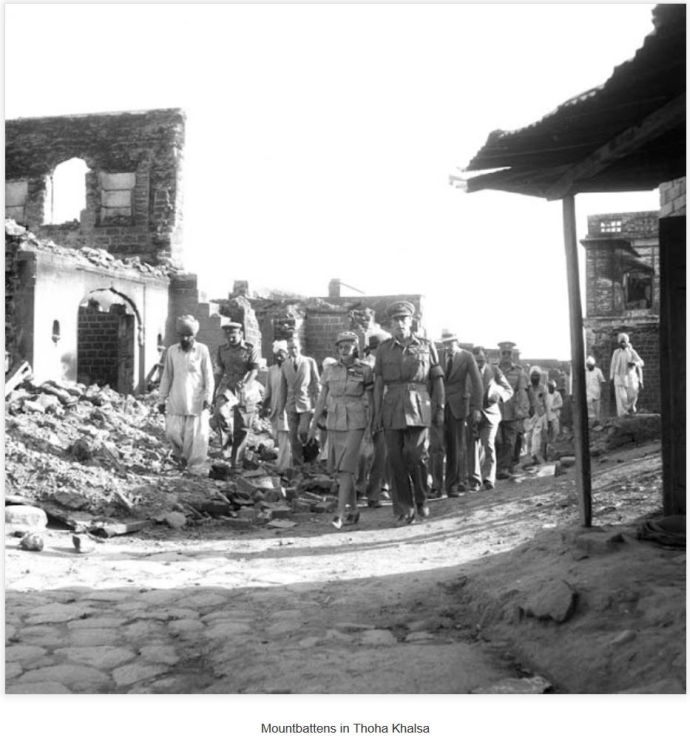
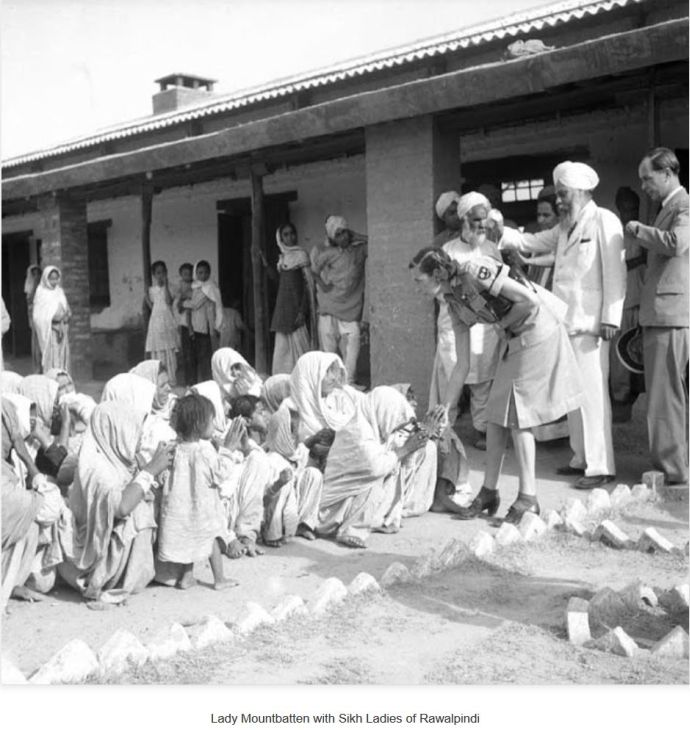
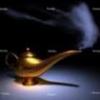

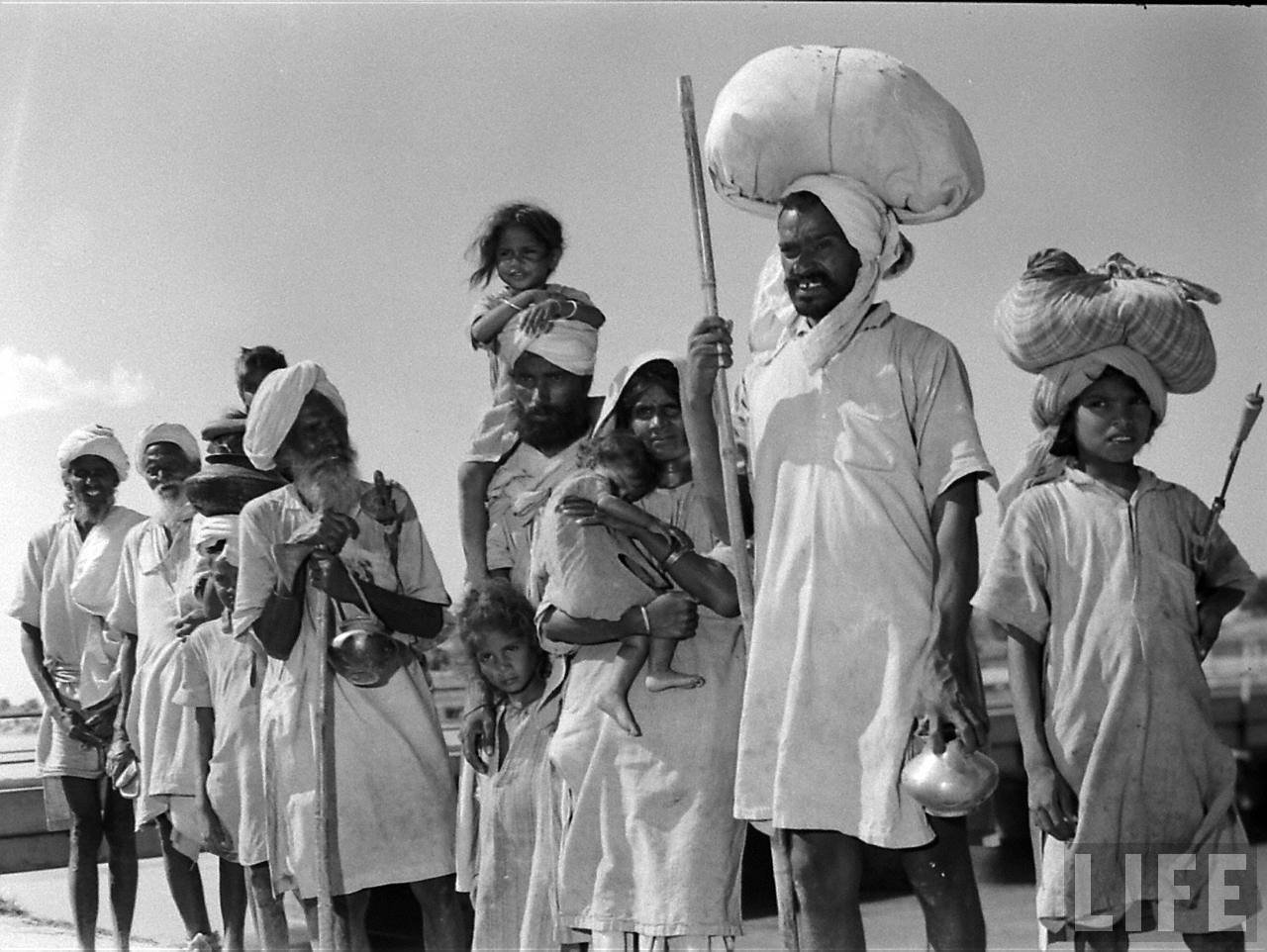



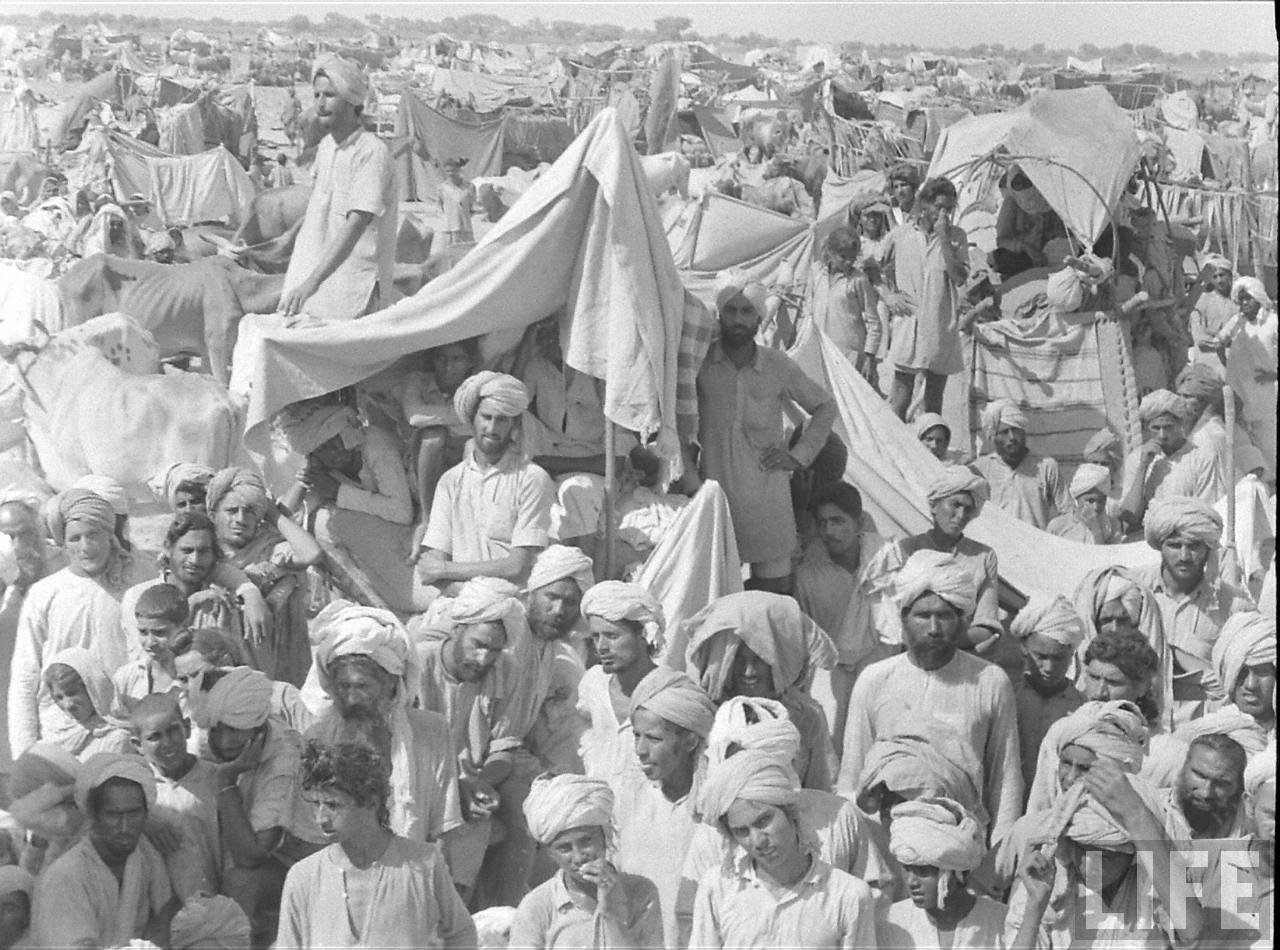
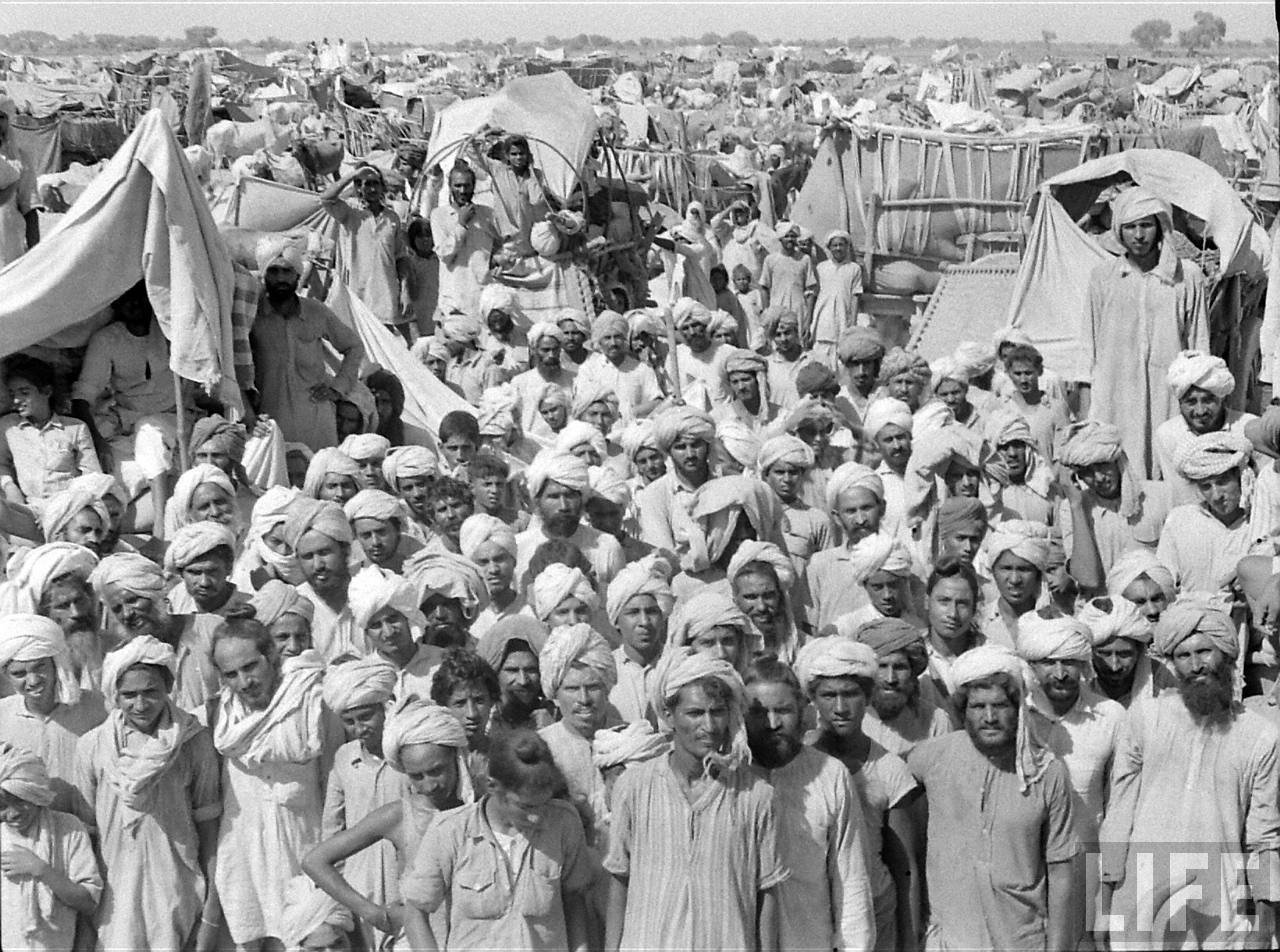

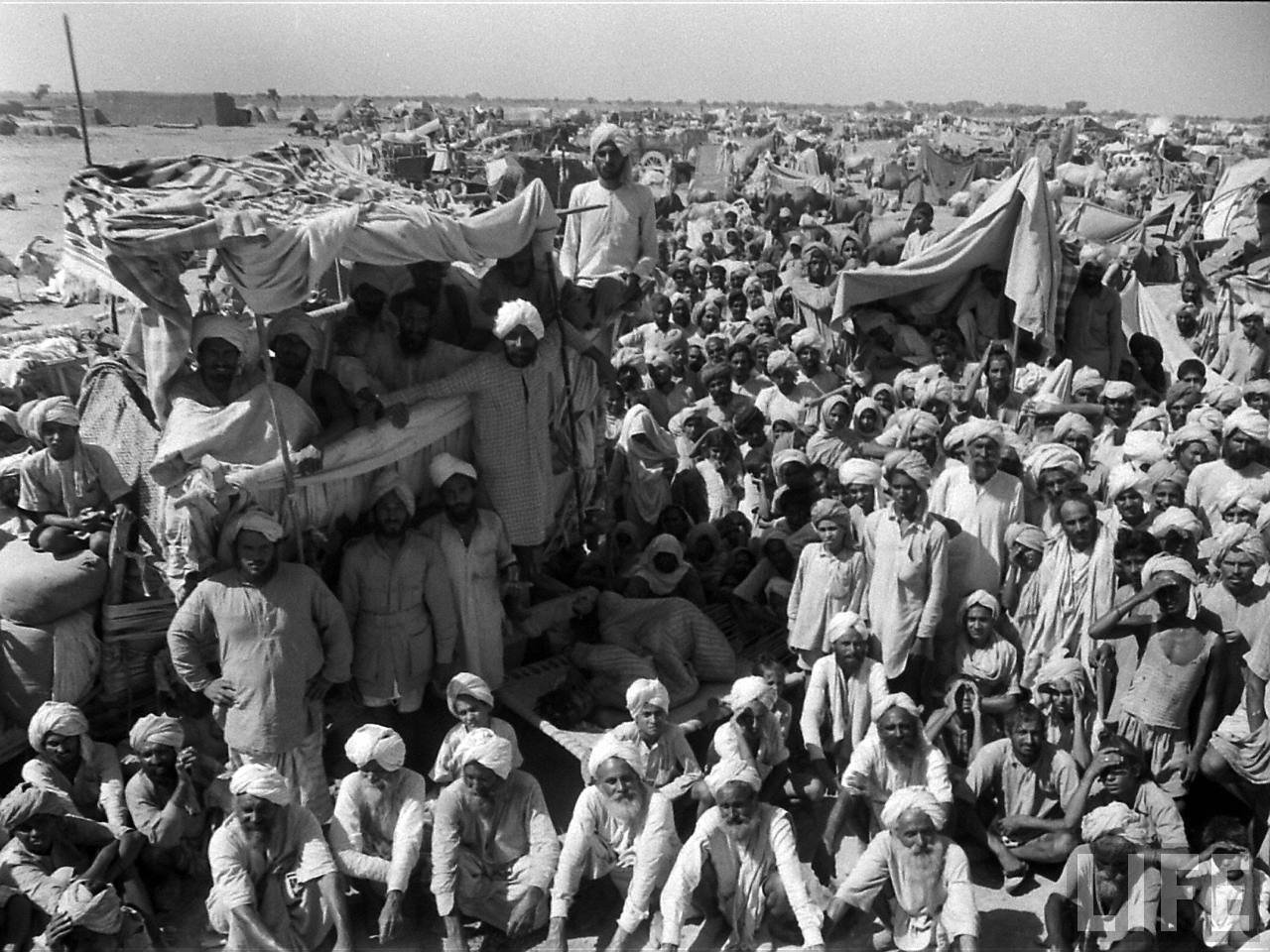
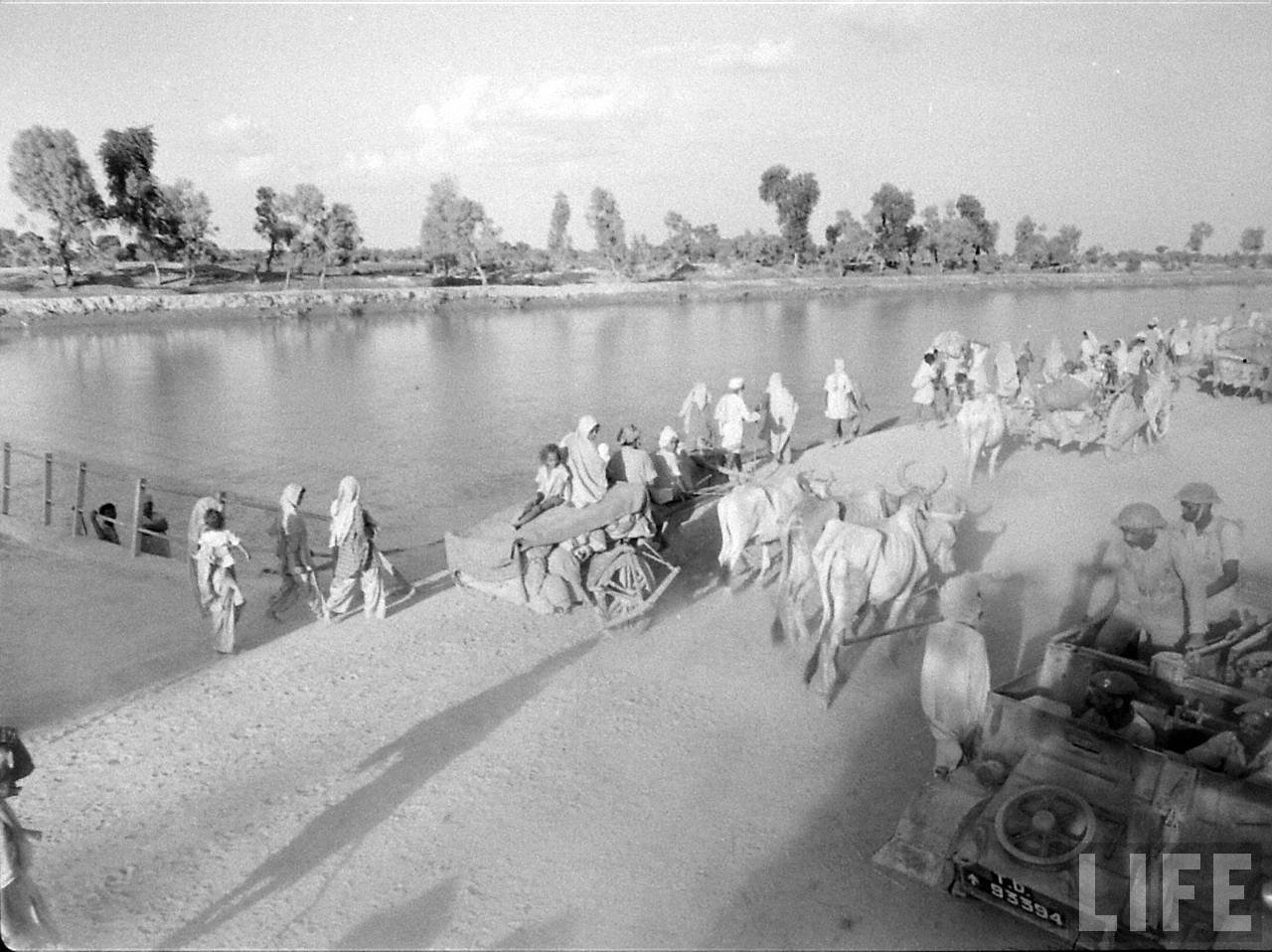
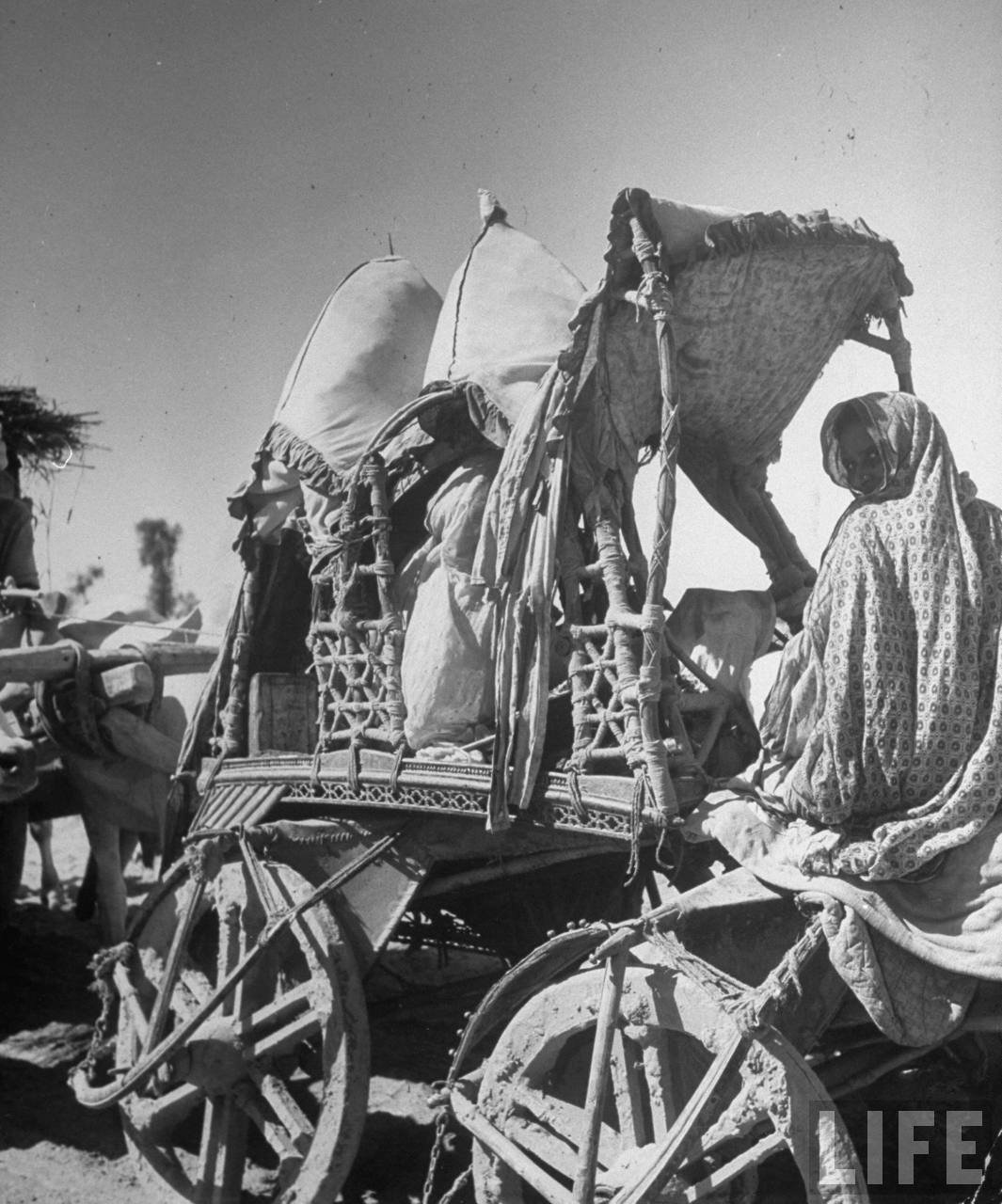





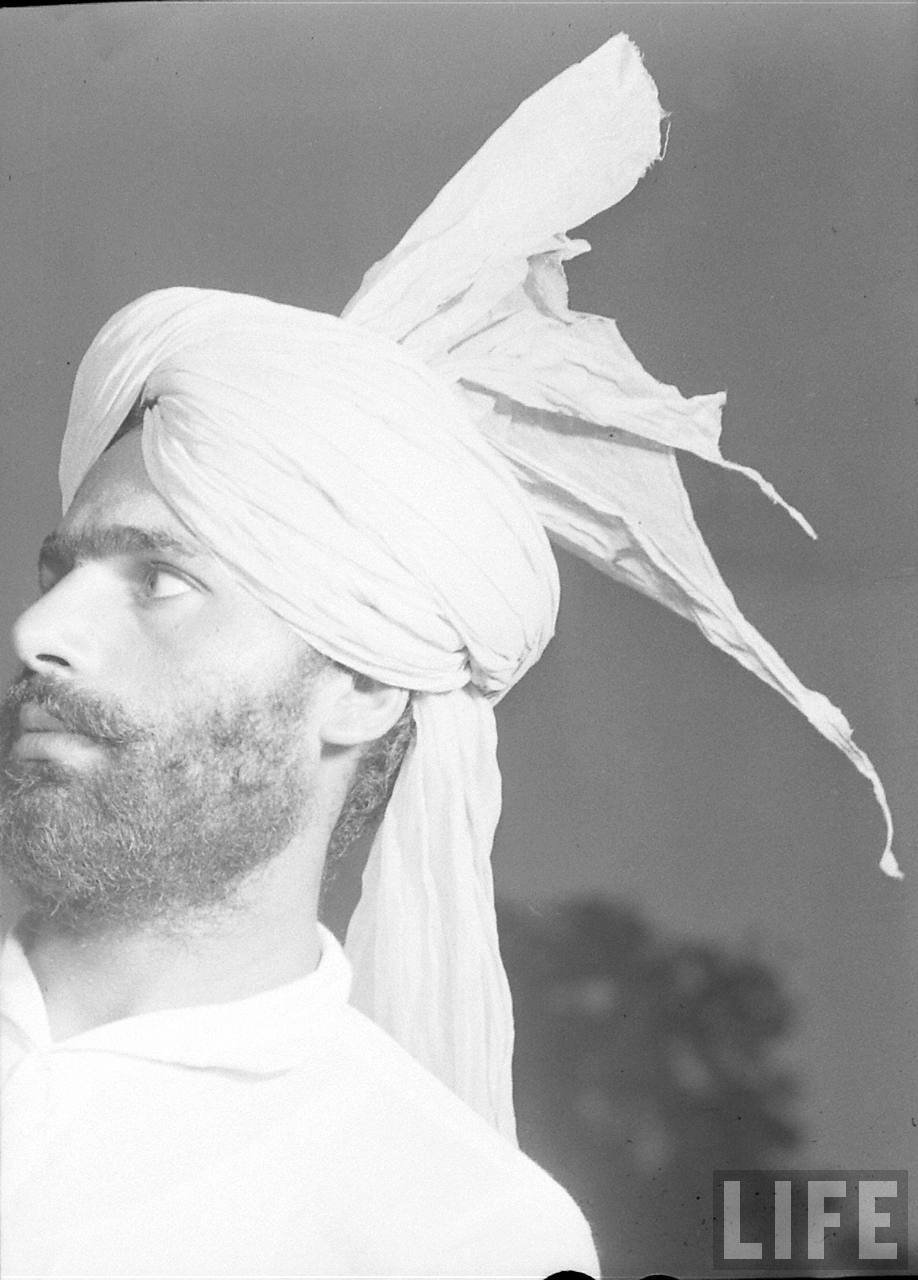

.jpg.03533c12ff01155fa853e0815a966169.jpg)
